
- Jun 29, 2020

Travel Photography Gear: Nikon Z50 Review

It's taken me years (no kidding!) to find a good replacement for my trusty old Nikon D3. I ideally wanted something smaller and lighter, but with equally convincing image quality, plus an option to shoot great videos. Now that my travel photography gear collection has finally been expanded, read this Nikon Z50 review to find out why I believe it's the best camera for travel photography. Based on a few months of experience with the camera, testing different modes and pressing all the buttons, hopefully, I will be able to answer any questions you may have - sample images also included of course.
Disclaimer: As an Amazon affiliate, I earn from qualifying purchases
First of all , what sort of camera is the Nikon Z50?
The Z50 is a mirrorless camera, meaning it's compact in size and more lightweight than most DSLR brothers. For a travel camera particularly, the small size and weight is definitely something you will appreciate, having to carry it with you on tours and hikes. However much I love my Nikon D3 DSLR, after a while, it feels like I'm carrying a brick around...
At the same time, like the DSLR cameras, a mirrorless camera still comes with interchangeable lenses, so, if the kit lens is not enough, you can expand your collection and pick different ones depending on the nature of the shoot.
Nikon markets the Z50 as a 'camera for the rest of us'. I'm not sure what to make of the slogan really as it sounds kind of funny, but I guess the way you could interpret it is that it's suitable for both those with little photographic knowledge and those who are more advanced, just maybe not quite techy enough for the professional photographers. So, it's a great choice both if you are looking to upgrade from a phone or a compact camera or looking to downsize from a bulky DSLR. Depending on your skill set and desired level of involvement, you can use the fully automatic mode and let the camera make the decisions about the best settings, choose from a range of preset shooting modes (like sports, landscape, sunset etc.) or play around with all the settings in manual mode. I've done all three and got great results. The 'scene' modes are super handy when you don't want to dive into the individual settings.
The key camera stats:
(not going to get too technical here, just listing what I think is important from a user perspective and why it matters)
20.9MP APC-S sensor (not the biggest megapixel number I've seen, but unless you like to crop your photos a lot, I would actually prefer 20MP to 50MP, because image size! The more megapixels you have, the more space the photos will take up, both on the memory card and, afterwards, on your computer. With the amount of photos I transfer to my laptop after each trip, available disk space matters. For comparison, my Nikon D3 is 12 megapixel and I never felt that I needed more. It's more than enough for blog posts, social media as well as to print A4-size photo books.)
Body weight of 395 grams (nothing compared to 1.2 kilos for the Nikon D3! When I go hiking and carry it on my shoulder, I don't feel like I am lugging around a brick. I can hold it up in one hand with the arm stretched out to take a selfie without a problem.)
4K video at 30 fps and 1080 p HD video at 120 fps (personally, I am not bothered about 4K, HD is good enough for me, but, you know, it's there if you want to have the latest and greatest trends.)
Shoots photos at up to 11 fps (fast enough to get that perfect yawning cat shot - tested by me!)
Electronic viewfinder (while I don't always use it, it's an important option to have in case the conditions don't allow to effectively use the screen. Some manufacturers decided to lose this feature, which is a shame - Canon EOS M6 Mark II, a similar mirrorless camera, for example, only offers the viewfinder as an optional extra.)
3.2 inch rear screen is a touchscreen with live view and 'touch to focus' and 'touch to take a photo' features (I love being able to take a photo by touching - sometimes you just need that speedy reaction as opposed to starting to press buttons to move the focus point around. You literally just click on what you want sharp in the image and the camera focuses there and takes a photo.)
Rear screen can be tilted upwards and flipped to face the front (both of those I've been using a lot. The tilting comes super handy for shooting from awkward angles, for example, from the ground. If I didn't have the tilt option, I would have to lie down to be able to see what the camera captures - this way, I just crouch next to it and can see everything. The flipping makes selfies super easy.)
Face tracking/eye recognition (good for portraits, as it removes the need to move around the focus point manually.)
No in-body image stabilisation (but both kit lenses have image stabilisation.)
Wireless photo transfer to smartphone through the Nikon SnapBridge app (I find it a bit fiddly, but the cool thing is that you can choose whether you want to transfer the full-sized photo or a smaller version, so if storage space is an issue on your phone and you only want to post to Instagram, it's a nifty option to have)
Storage card type: SD/SDHC/SDXC; One card slot only. (Quite a common memory card format with lots of options available for all budgets. My Nikon D3 has two card slots, so it's possible to put .jpeg and .raw photos on different cards, but, to be honest, I haven't felt any inconvenience from only being able to use one memory card.)
One more thing I wanted to point out - compared to its direct competitors (Sony A6400, Fujifilm X-T30 and Canon EOS M6 Mark II), Nikon Z50 has the most protruding hand grip, which does wonders for comfort of holding. One of the issues of small mirrorless cameras for me is that they have shrunk down so much there's nothing to hold on to. That was a real downer when I was trying cameras out in the shops. I am happy to report that's not the case with the Z50 at all. It sits firmly in my hand and I don't worry about dropping it, so the ergonomics is definitely winning here.

So why did I buy the Nikon Z50 after years of indecision?
When looking for my next travel camera, I kept an open mind and researched and tried cameras from different brands and types (compact, bridge, mirrorless, DSLR). The competitors just weren't good enough in handling or image quality for me to forget about my Nikon lens collection, so in the end I resigned myself to having to carry a lot of weight around and was looking to buy another top of the range Nikon DSLR. But then I came across the Z50 and realised that in side-by-side image comparisons, in my opinion, it was coming out better than the flagship D4 and D850.
Ultimately, it was the image quality that did it for me, and, having now spent plenty of time taking photos with the Z50, I can confirm it hasn't disappointed. The images come out sharp and gorgeous.
Speaking of image quality, naturally, no camera review is complete without sample images and videos, so check them out. I used the 16-50mm kit lens throughout, so you can see what you get with the camera out of the box, without the need to invest in fancy professional lenses. Click on the photo to see a larger size.
Nikon Z50 sample images:
And here's a video filmed completely with the Nikon Z50:
What are the different kits and which one should I choose?
Naturally, you can get just the body of the camera, but there are several interesting bundles that you can buy that I recommend choosing from:
Nikon Z50 body + FTZ adapter
What on earth is an FTZ adapter you may ask and why would I need one? Well, the diameter of the lens mount on the Nikon Z-series cameras is different compared to the other Nikons (they call the other mount the F-mount). There aren't that many lenses on the market that were made for the Z-mount. The adapter allows you to be able to use the lenses made for the other Nikons and, as long as the lens has an integrated autofocus drive, the autofocus functionality will be fully supported.
If there is no drive in the lens, you will be able to focus manually with a focus box in the viewfinder turning green when the object behind it is sharp. It's not what you would want to use for photographing moving subjects, but is surprisingly easy to use for shooting landscapes and other stills.
This bundle is for you if you already have a Nikon DSLR with all the lenses you could need and that you definitely want to keep using. However, before you settle on this one, I would encourage you to check out bundle number 3 (body + FTZ adapter + 16-50mm lens) because the lens is pretty awesome and you will be saving weight and space not having to wear the adapter with it.
Nikon Z50 body + 16-50mm lens
In this kit, you get a great lens that, in my opinion, will cover most situations a travel photographer comes across. Sure, you wouldn't use it to take photos of birds far away in the sky, nor is it the right thing for something like whale and dolphin watching tours, where the subjects tend to be quite far away from the photographer, but mostly my travel shots consist of landscapes, architecture and some selfies, which this lens is ideal for.
All the reviews I read about this lens were glowing and, having tried it out myself now, I can confirm that they were not wrong - I love the quality of the photos! I've got other Nikon lenses, but to be honest, after playing around with a few for test purposes, I just left the kit lens on and that's what I use all the time.
The 16-50mm lens is tiny, which is ideal for something that you have to carry for a while. It also has built-in image stabilisation, to compensate for the lack of it in the camera body.
This bundle is for you if all you're after is a small-sized camera that takes great landscape to portrait photos and you're not really bothered about adding more lenses to your collection
Nikon Z50 body + FTZ adapter + 16-50mm lens
I've already described the adapter and the lens above, so I'll be short and sweet. This bundle is for you if a) you want to have a native kit lens, but also have a few F-mount lenses that you don't want to part with or b) you want to purchase several lenses and don't want to wait for Nikon to make more Z-mount ones (or you find the Z-mount lenses rather expensive, which they totally are)
Nikon Z50 body + 16-50mm lens + 50-250mm lens
If you like having a big zoom range, then this bundle might just be the thing for you. You get two kit lenses native to the camera, which together cover a very substantial zoom range. Both lenses also come with built-in image stabilisation. I haven't tested the 50-250mm lens myself, as I've decided that between the 16-50 lens and the other Nikon lenses I already own, I've got everything I need.
Sounds interesting? Then use the links below to see what sort of prices you would be looking at.
Check out available bundles and prices for Nikon Z50 on Amazon UK
Check out available bundles and prices for Nikon Z50 on Amazon US
So I've been waxing lyrical about the Nikon Z50 for what feels like an eternity, but do I have any gripes ? As a matter of fact I do have a few, no camera is perfect!
You have to flip a switch to change between photo and video mode as well as use different buttons to start a recording vs take a photo. My brain struggles to remember to do both. A bit disappointing thinking you're catching a cool moment on video to discover the switch was actually in photo mode...
A small gripe is that while the 'tap the screen to focus and take a photo' feature is great, I often end up taking random photos when trying to flip the screen out and back. You can disable that functionality if you find it annoying though.
If you want to use the selfie mode (i.e. flip the screen to face the same direction as the lens, so you can see yourself), you can't do that and use a tripod in the conventional way, because the screen flips down to where the tripod is and will be obstructed. Fortunately, there is an inexpensive solution for this problem - Smallrig made a special mounting plate that shifts the location of the tripod to the side.
Shop Smallrig mounting plate on Amazon US
Shop Smallrig mounting plate on Amazon UK
And that is all. I am in love with my Nikon Z50 and if this post has convinced you to get one too, I hope you love it just as much as I do!
#travelessentials #photography #shopping
- Product Review
Recent Posts
8 Must-Have Train Travel Accessories
Best Travel Games for 2 Adults
Best Travel Kettle - Researched, Tested, and Reviewed
Nikon Z50 review
Another mirrorless marvel from nikon, but the mid-range competition is very hot.
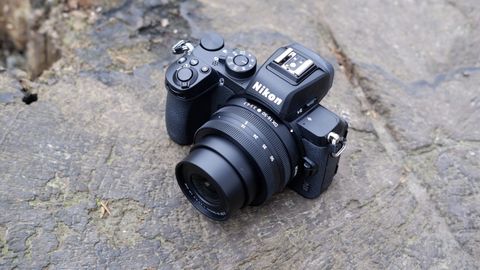
TechRadar Verdict
The Nikon Z50 is an excellent debut for the company in the crowded APS-C mirrorless market. It’s an ideal travel camera, and it’s also a great option for those looking to move from a Nikon DSLR, or who just love the brand. Offering great handling, excellent value and a set of enticing features, there’s a lot to like about the Z50, even if it does fall a little short in a few areas.
Great handling
Impressive viewfinder and screen
Great for travel
SD cards more common than XQD
Tilt screen can’t be used with tripod
No joystick for selecting AF points
Just a single UHS-I card slot
Limited native lens range
Why you can trust TechRadar We spend hours testing every product or service we review, so you can be sure you’re buying the best. Find out more about how we test.
Nikon made a spectacular debut in the mirrorless full-frame world with the Nikon Z6 , an all-rounder that currently sits top of our best camera list. And now it’s trying to repeat the trick for APS-C cameras with the dinkier, more hobbyist-friendly Nikon Z50.
What are APS-C cameras? This sensor format became dominant in the early days of DSLRs, and is used in cameras that sit below full-frame models. Smaller than full-frame, and called DX format by Nikon, these sensors are found in more compact, affordable bodies that are great for travel.
Not that the Nikon Z50 is small for an APS-C camera. Perhaps thinking of those who might be moving from its DSLRs, Nikon has prioritized handling in the form of a generous grip, at the expense of a very small body that is the calling card of cameras like the Fujifilm X-T30 .
Central to the Z50 is its use of the same Z-mount that debuted in the Z7 and Z6. This means you can use all of the existing lenses that have already been announced for the Z range, as well as existing F-mount (DSLR) lenses via an optional adapter. However, there have been two lenses especially created for the DX format, which are set to be joined by plenty of others over time.
Those lenses are a 16-50mm f/3.5-5.6 ‘pancake’ lens, which is the standard kit lens, and a 50-250mm telephoto, which you can buy separately or as part of an excellent-value twin lens kit with the Z50.
Nikon Z50: Features
- Same Z-mount as Nikon Z6/Z7
- Electronic viewfinder and tilting touchscreen
- 20.9MP APS-C (DX format) sensor
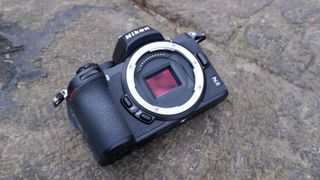
At the heart of the Z50 is a 20.9MP sensor, which is joined by an Expeed 6 processor (the same engine as found in the Nikon Z6/Z7. Although this has the same pixel count as the Nikon D500 DSLR, we’re told it’s not the same sensor. The Expeed engine helps to facilitate features like 4K video recording, as well as the native ISO range, which starts as low as ISO 50 and tops out at ISO 25600.
Sensor: 20.9MP APS-C (DX format) sensor Image processor: Expeed 6 AF points: 209 points ISO range: 100 to 51,200 Video: 4K UHD up to 30fps Max burst: 11fps Connectivity: Wi-Fi, Bluetooth
Also joining the party from the Z6 is the same hybrid autofocusing system, with 209 on-sensor AF points that cover approximately 90% of the frame and promise to deliver edge-to-edge sharpness. Sensitivity down to -4EV is promised for low-light shooting, and there’s also Eye-Detection AF, which should come in handy when photographing people; unlike Sony ’s similarly specced models, there’s no Animal Eye AF, though.
To compose your images, you’ve got the choice of a 0.39-inch, 2360k-dot electronic viewfinder (which is smaller and lower in resolution than the one on the Z6/Z7), or a 3.2-inch tilting TFT LCD, which is touch-sensitive. Unlike the Z6/Z7, you have the benefit of tilting this to face forward from the bottom hinge, making it useful for selfies – but less so for attaching the camera to a tripod.
The option of shooting 4K video is pretty standard on most cameras now, and the Z50 includes this, with frame rates up to 30fps available.
To transfer your files to your smartphone there’s in-built Wi-Fi and Bluetooth, which works with Nikon’s SnapBridge app. There’s a micro USB port for in-camera charging too, which means you can restore its charge via a portable external battery, although it’s a shame this isn’t the increasingly common USB-C connection type.
A final thing worth mentioning is that this camera accepts SD cards in its single card slot, rather than the XQD format used by the Z6/Z7. This is good news for those who are already in possession of a stack of SD cards – and for the wallets of those who aren’t, as this format is much cheaper than XQD.
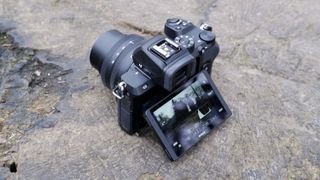
Nikon Z50: Build and handling
- Like using a miniature Nikon Z6/Z7
- Good balance of buttons and dials
- Missing a joystick
Place the Z50 next to its full-frame siblings, the Z6 and Z7, and you can definitely see the family resemblance. There’s the same kind of layout, viewfinder placement and button layout, only in a more compact frame.
Using the camera with the new Nikkor 16-50mm f/3.5-5.6 ‘pancake’ lens makes for a very neat overall package; it’s not quite pocket-friendly, but it certainly slides much more neatly into smaller bags than a full-frame equivalent.
Some controls have been removed to save space, though. You won’t find a top-plate LCD, and nor is there a joystick on the back of the camera. The former we didn’t miss too much, but a joystick for changing the AF point would have come in really handy.
Unlike on some rival cameras, you can’t continue to use the touchscreen while working with the viewfinder, and this can really slow down the process of selecting the appropriate AF point, as you have to work with the much slower directional keys; it’s not the end of the world though.

On a more positive note, the buttons that are present don’t feel too cramped, despite being housed in a smaller form factor. The grip is also nicely pronounced, making it comfortable to use for long periods of time. Some of the missing buttons’ functions have been replaced with ‘virtual’ touchscreen options, such as the magnify option and the display button.
There’s a mode dial on the top of the camera, with a switch that allows you to jump straight to shooting video, and back to stills again. Also on top of the camera are a dedicated video record button, an ISO button and an exposure compensation button.
While the Z50’s electronic viewfinder isn’t quite up to the standard of those on its full-frame siblings – not that you’d expect it to be – it remains very usable, and if you’ve never used one of the full-frame models, you’re also much less likely to notice the reduction in quality. The tilting screen is also great, with the new forward-facing option being helpful for selfies and video recording, though some will be disappointed that you can’t use it easily when the camera is mounted on a tripod.
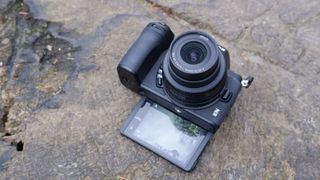
Nikon Z50: Performance
- Same AF system as Z6, 209 points covering 90% of the frame
- 300-shot battery life
- Eye tracking autofocus
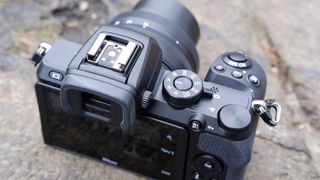
The Nikon Z50 uses the same AF system as the Z6, with the impressive array of 209 points giving you 90% coverage across the frame.
In most situations, the camera is capable of locking onto subjects quickly and easily, and it only rarely picks out the wrong subject to lock onto when left set to Auto-area AF. Switching to Single-point AF allows you to select your own AF point. It’s only in particularly low-light conditions that there’s a little hunting before the system locks on to the subject, but it’s rare for a false confirmation of focus to be displayed.
For moving subjects, you can switch to AF-C and enable a continuous frame rate. As we’ve seen with the Z6 and Z7, while the camera is a good performer when the subject is fairly predictable, being able to follow something which isn’t moving too erratically, it’s not on the same level as Sony has achieved with cameras like the A9, and even the Sony A6500 from its APS-C range.

If you’re someone with a penchant for photographing sports and action, this is probably not the camera for you. But for the occasional moving subject, such as pets and kids, it copes reasonably well.
It’s fairly disappointing that only the slower UHS-I SD cards are compatible with the Z50. Although up to 11fps shooting is available, relying on these cards means the buffer tends to fill up fairly quickly. However, if you’re just shooting for a few seconds here and there it’s not too problematic.
Eye AF does a great job of detecting a subject’s eye in a scene, and following it even when the face moves around. Again, this is probably not a camera that will be used extensively by professional portrait photographers, but for those who take family snapshots, this kind of feature can prove invaluable.
A 300-shot battery life is promised from the new EN-EL25 battery for the Z50. While this isn’t the most generous rating on the market, that 300 figure is a conservative estimate, and in practice you should find that at the very least it lasts for a full day of average shooting. If you’re someone who likes to capture a lot of 4K video, though, it might be worth buying an extra battery.
Nikon Z50: image quality
- Good level of detail despite crop sensor
- Vibrant colours
- Some loss of detail at high ISOs
Despite the smaller sensor, and lower resolution than both the Z6 and Z7, the Nikon Z50 produces images with a great overall impression of detail. When pixel- peeping at 100%, you’ll likely see that the detail isn’t quite as fine as from the 45.7MP Nikon Z7, but for the price and level you wouldn’t expect that to be the case – besides which, not too many enthusiasts and hobbyists are likely to be examining their images that closely.
The colors produced by the sensor are great, looking realistic while having a good amount of vibrancy and saturation, an the all-purpose metering setting does a very good job of judging exposures to produce balanced results in a variety of shooting conditions. Similarly, the automatic white balance setting copes well with different lighting conditions, perhaps erring just a touch towards yellowish tones when faced with artificial lighting sources.
In low light, with its smaller sensor, the Z50 doesn’t cope quite as well as NIkon’s full-frame Z Series cameras, but it still puts in a good performance. It’s best if you can keep the ISO setting to ISO 6400 or below, as from ISO 12800 up you can see noticeable smoothing, and some noise, when looking at images at A4 size; you can get away with higher ISOs if you only intend to share or print a smaller image.
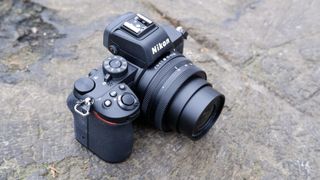
As with its big brothers, the Z6 and Z7, there’s a heck of a lot to like about the Nikon Z50. It’s not a perfect camera by any means, but it’s a welcome addition to what is an admittedly crowded market.
If you’re already a fan of the Nikon brand – perhaps you already have one of its DSLRs – and have been contemplating moving to mirrorless, it’s an especially tempting proposition. The Z50 is also a great option for those looking for their first ‘proper’ camera, giving you many of the perks of the Z6/Z7 without such a high price tag.
The build and handling are particularly appealing, with the Z50 being essentially a miniaturized version of those superb full-frame models. The deep grip and good spread of buttons make it comfortable and quick to use in most situations, though not having a joystick slows down AF point selection when working with the viewfinder.
Speaking of which, the viewfinder, while smaller and lower in resolution than those found on the Z6 and Z7, is still very usable and comfortable to use – and if you’ve never used a full-frame Z Series model you’re unlikely to feel that you're missing out. It’s also on a par with cameras from rival brands that compete closely with the Z50, such as the Fujifilm X-T30 , which uses a similar 0.39-inch, 2360k-dot device.
Being able to tilt the screen is handy, but the fact that it tilts from the bottom of the camera means you can’t use it with a tripod. It’s fine for selfies, but much less useful for those intending to use the camera for vlogging.
Talking of rivals, Nikon has a tough job on its hands to convince floating voters to choose the Z50 over Fujifilm ’s popular X Series cameras or the Sony Alpha range. While having the same Z mount as its full-frame siblings means the Z50 is compatible with a useful array of lenses, it can’t yet compete with the range and variety available elsewhere.
That said, the Z50 does have the upper hand over its rivals in two areas. One is value, particularly if you buy the keenly-priced twin-lens kit. The other is handling, which is most noticeable when you compare it to Sony’s less ergonomic Alpha cameras.
The Z50 is a fantastic first foray into the APS-C mirrorless market for Nikon. It shows that the company is keen to keep developing in this area, and perhaps signals another nail in the coffin for DSLRs, at least at the hobbyist level. It’s not a perfect camera, but it is a very good one – and one that will only get better as the price drops, and more lenses become available.
The competition

One of the Z50’s closest rivals is the beautifully styled Fujifilm X-T30 . This also totes an APS-C sensor, excellent viewfinder and plenty of dials and buttons, and it’s hard to choose between the two. In terms of the available lens range the Fujifilm is the clear winner, but Nikon is hot on its heels, with plenty of lens launches planned for the upcoming year.

Amy has been writing about cameras, photography and associated tech since 2009. Amy was once part of the photography testing team for Future Publishing working across TechRadar, Digital Camera, PhotoPlus, N Photo and Photography Week. For her photography, she has won awards and has been exhibited. She often partakes in unusual projects - including one intense year where she used a different camera every single day. Amy is currently the Features Editor at Amateur Photographer magazine, and in her increasingly little spare time works across a number of high-profile publications including Wired, Stuff, Digital Camera World, Expert Reviews, and just a little off-tangent, PetsRadar.
A new Gmail feature could soon make it way easier to manage your subscriptions
You haven't actually got a massive road toll bill - it's a phishing scam, FBI warns
Pimax’s new VR headset can swap between QLED and OLED displays – but the Vision Pro beats it in one important way
Most Popular
- Reviews TV REVIEWS v1.11 HEADPHONES REVIEWS v1.7 MONITOR REVIEWS v1.2 SOUNDBAR REVIEWS v1.3 MOUSE REVIEWS v1.5 KEYBOARD REVIEWS v1.3.1 PRINTER REVIEWS v1.2 VACUUM REVIEWS v1.3 PROJECTOR REVIEWS v0.8 TOASTER REVIEWS v1.0 BLENDER REVIEWS v1.0 KEYBOARD SWITCH REVIEWS v1.0 SPEAKER REVIEWS v0.8 CAMERA REVIEWS v0.12.1 LAPTOP REVIEWS v0.8.2
- In Progress
- Newsletters
Nikon Z 50 Camera Review

The Nikon Z 50 is the first APS-C camera in Nikon's mirrorless Z series. It sits below full-frame models like the Nikon Z 5 and Nikon Z 6II and above the smaller, vlogging-oriented Nikon Z 30 . While this isn't the most portable APS-C camera, it's well-built and feels great in the hand. Toss in fast mechanical burst shooting, decent video specs, and a good but not class-leading autofocus system, and you've got a well-rounded camera with a lot to offer for beginners and more advanced users alike.
Our Verdict
The Nikon Z50 is good for travel photography. It takes sharp, clear images, performs well even in dimly-lit environments, and is well-built with a weather-sealed body. It also has a decent overall autofocus system, though it can be a bit unreliable with very fast-moving subjects or busier scenes. It also isn't the most portable APS-C mirrorless camera, and its battery life isn't great.
- Great image quality.
- Comfortable to operate.
- Well-built and weather-sealed.
- Not the most portable option.
- Mediocre battery performance.
The Nikon Z 50 is great for landscape photography. Image quality is impressive, with excellent dynamic range to bring out more highlight and shadow detail. There isn't too much noise at higher ISO settings, so it performs okay in low light. That said, battery life leaves something to be desired, especially for long hikes in remote locations.
The Nikon Z50 is good for sports and wildlife photography. Its autofocus system has a great tracking feature, if not quite as reliable as higher-end mirrorless models. Still, it can shoot at a relatively quick burst rate. Images also look sharp and detailed. However, its photo buffer isn't particularly large, particularly for RAW files, which can slow you down if you shoot extended bursts.
- Quick burst shooting.
- Fairly small photo buffer.
The Nikon Z 50 has very good RAW image quality. Though it doesn't have the highest resolution sensor among its peers, it still captures a good amount of fine detail. Its dynamic range is excellent, so it can capture a wide array of detail in high-contrast scenes. Its noise handling in low light is also decent.
- Excellent dynamic range.
- Images are fairly detailed.
- Noise handling is just decent.
The Nikon Z50 is decent for vlogging. It doesn't have a fully articulated screen, but you can still flip its screen down to face you for vlogs. Just be aware that putting it on a tripod can block the screen, which isn't ideal. There's no built-in sensor stabilization, but using lenses with optical stabilization can help reduce camera shake. Its autofocus also does an excellent job of keeping faces in focus when recording video.
- Good autofocus performance.
- Great video quality.
- Screen doesn't fully articulate.
The Nikon Z50 is good for studio video. Its overall video quality is quite good in more controlled lighting situations, and it offers a fair amount of frame rate options, including 120 fps in 1080p for slow-motion shots. However, it's limited to 4k at up to 30 fps, with a slight crop. It also can only shoot 8-bit 4:2:0 video, with no Log recording option, which means less leeway in post-production. While it includes a microphone port to connect an external mic, there's no headphone jack for in-depth audio level monitoring.
- No headphone jack.
- Mediocre video recording quality in poorly-lit environments.
- No Log recording.
The Nikon Z50 isn't designed for action video. It's too big to be mounted on a helmet rig and isn't water-resistant. Its frame rate options are also limited in 4k, though it can shoot at up to 120 fps video in FHD for slow-motion footage.
- Limited frame rate options in 4k recording.
- 7.5 Travel Photography
- 7.8 Landscape Photography
- 7.8 Sport & Wildlife Photography
- 7.9 Raw Photo Performance
- 7.3 Vlogging
- 7.8 Studio Video
- 5.4 Action Video
- Updated Jan 29, 2024: Added text to the 'Raw Photo Performance' verdict box and updated existing text in the 'Photo RAW Noise' box to match the camera's adjusted score after conversion to Test Bench 0.12.1.
- Updated Jan 29, 2024: Converted to Test Bench 0.12.1 .
- Updated Nov 08, 2023: Brushed up text throughout review for clarity.
- Updated Sep 05, 2023: We re-processed the 'Photo RAW Dynamic Range' test scene photo using Lightroom rather than RawTherapee and re-uploaded it to the review for consistency with our current methodology.
- Updated Aug 30, 2023: Added link to the Canon EOS R10 in the ' 4k Video Frame Rate ' section of the review to provide an alternative that can record uncropped 4k video at certain frame rates.
- Updated Jun 09, 2023: Added a link to the Nikon Z 30 in the 'Screen' section of the review.
- Updated Jun 02, 2023: We've updated the 'Low Speed Continuous Shooting' field to reflect this camera's minimum low-speed burst rate of 1 fps. We had previously shown the default low-speed setting of 3 fps.
- Updated Apr 05, 2023: Converted to Test Bench 0.12 .
- Updated Jan 24, 2023: Added text to 'Photo AF-C Tracking' and 'Photo AF-C Center Point' boxes, with minor touch-ups throughout the review for clarity.
- Updated Jan 23, 2023: Converted to Test Bench 0.11 .
- Updated Nov 17, 2022: Added full text to review and rewrote existing text for clarity.
- Updated Sep 23, 2022: Converted to Test Bench 0.10 .
- Updated Aug 09, 2022: We mistakenly noted that this camera had no water resistance, but according to the manufacturer's website, the camera is in fact weather-sealed. The 'Water Resistance' field has been updated.
- Updated Aug 04, 2022: Converted to Test Bench 0.9 .
- Updated Apr 26, 2022: We reevaluated this camera's low-light video performance in comparison with other cameras and slightly increased its score. The 'Low Light Capability' and overall 'Video Quality' scores have been adjusted accordingly for both 4k and FHD.
- Updated Apr 22, 2022: Converted to Test Bench 0.8 .
- Updated Jan 24, 2022: Rescored FHD test scene extract.
- Updated Sep 20, 2021: Updated 'Crop' field to show a 1.1x crop in 'FHD Video Stabilization' box.
- Updated Sep 17, 2021: Retested 'Luminance Noise' to account for the camera's shutter speed and achieve more accurate results.
- Updated May 21, 2021: Corrected input error in 'Screen Articulation Type' field in 'Screen' section.
- Updated Mar 08, 2021: Corrected input error in the 'Max Aperture (Full Frame Equivalent)' field inside the 'Lens' section.
- Updated Feb 12, 2021: An input error in the 'Guide Mode' field in the 'Menu System' box has been corrected. An error in the name of the tested lens has also been fixed.
- Updated Feb 08, 2021: Corrected input errors in the 'Sample Gallery' section.
- Updated Feb 08, 2021: Review published.
Differences Between Sizes And Variants
The Nikon Z 50 is only available in one color variant: 'Black', and you can see our unit's label here .
Depending on the retailer, you can buy the camera body on its own or in a bundle with the Nikkor Z DX 16-50mm f/3.5-6.3 VR lens or with other Z mount lenses like the Nikkor Z DX 50-250mm F/4.5-6.3 VR lens, depending on the retailer.
There's also a 'Creator's Kit' bundle, which comes with the camera body, the Nikkor Z DX 16-50mm f/3.5-6.3 VR lens, a RØDE VideoMicro Microphone, a Joby GorillaPod 3K Kit, a SmallRig Vlogging Mounting Plate, and a Nikon Travel Kit case.
If you come across a different variant of the Nikon Z 50, let us know in the discussions, and we'll update our review.
Compared To Other Cameras
The Nikon Z 50 is a well-rounded entry-level camera. It's sturdier than a lot of cameras in its class, with some weather-sealing, along with excellent ergonomics. That said, it isn't the most portable APS-C option out there.
For other options, see our recommendations for the best mirrorless cameras for beginners , the best cameras under $1,000 , or the best cameras for photography .
The Nikon Z 30 is very similar overall to the Nikon Z 50, using similar sensors. The biggest difference between the two is in their respective designs. The Z 50 is more photography-oriented, with a viewfinder and tilting screen, while the Z 30 is aimed at vloggers, with no viewfinder and a fully articulated screen that can flip around to face you. Also, while the Z 50 uses a Micro USB port, the Z 30 now has a USB-C port, allowing you to use it with an external power supply for things like streaming. It also removes the Z 50's 30-minute recording time limit but struggles with overheating in 4k, limiting your effective recording time.
The Nikon Z 50 is a bit better overall than the Canon EOS R50 , with a sturdier build quality, better ergonomics, and a larger viewfinder. Its mechanical shutter and larger photo buffer make it better suited to faster subjects, like wildlife and sports. However, the R50 is more portable, and its simple controls and extensive auto-shooting modes are tailored more toward beginners.
The Nikon Z 50 and the Sony α6400 are both great entry-level models with different advantages. The Nikon has better ergonomics and a more intuitive user interface, while the Sony has a more effective autofocus system and a more established lens ecosystem.
The Canon EOS R10 is a little more well-rounded than the Nikon Z 50. Though some will prefer the Nikon's tilt-and-flip display, the Canon has a brighter, fully articulated screen, a faster max shooting speed, and noticeably more reliable autofocus tracking performance in both photo and video. The Canon is also a better option for video work; it can record uncropped 4k footage at 30 fps or cropped 4k video at 60 fps and supports 10-bit 4:2:2 recording when using the HDR PQ profile. On the other hand, the Nikon does exhibit less noticeable rolling shutter when panning. While the Nikon feels a smidge less well-built than the Canon, it's advertised as weather-sealed.
The Nikon Z fc and the Nikon Z 50 perform very similarly overall. They use the same 20 MP sensor, so image and video quality is comparable. However, the Z fc has slightly more consistent AF tracking performance. That said, the biggest difference between the two is design. The Z fc is designed to look like a vintage SLR, with more dedicated control dials, and has a fully articulated screen that makes it a little better-suited to vlogging. The Z 50, on the other hand, is a little less portable but feels more comfortable in the hand thanks to its handgrip. Unlike the Z fc, it has a tilting screen that's better suited to waist-level photography.
The Sony α6600 and the Nikon Z 50 are both APS-C mirrorless cameras, though the Sony is a little higher-end, with weather-sealing and in-body image stabilization. The Sony also has a bigger battery that lasts longer, is more portable, and has a more reliable autofocus system. That said, they both deliver impressive image quality, and the Nikon has slightly better high-ISO noise handling, making it a tad better-suited to low-light photography.
The Nikon Z 50 and the Fujifilm X-T30 II are both good beginner cameras. The Nikon is less portable than the Fujifilm, but it's a bit more comfortable to shoot with, thanks to a larger handgrip and viewfinder. Otherwise, they both offer well-rounded photo and video performance for casual or beginner shooters.
The Nikon Z 5 and the Nikon Z 50 are both entry-level options in Nikon's mirrorless lineup, but they have different-sized sensors. The Z 5 has an advantage in noise and low-light performance thanks to its full-frame sensor, along with advanced features like in-body image stabilization and dual memory card slots. However, the Z 50's APS-C sensor gives it a more portable body. The Z 50 also has faster burst shooting and is a bit better-suited to video and vlogging, with more frame rate options and less of a crop on 4k video.
Test Results

The Nikon Z 50 isn't the most portable APS-C camera out there, partly because of its large, one-size-fits-all lens mount. The upside of this is that it's fully compatible with any Z-series lens, whether DX (APS-C) or FX (full-frame), and smaller FX lenses won't feel too imbalanced. Still, if you're looking for something more portable, the Fujifilm X-T30 II has a much more compact body.

The camera feels well-built. It's made of plastic but still feels solid, and it's weather-sealed against elements like dust and moisture. Its battery and SD card slots are covered by a hinged door, while the inputs and outputs are covered by rubber flaps. The buttons and dials also feel sturdy and turn well. The screen tilting mechanism feels solid, too.

- Nikon Z 50 camera body
- Nikkor Z DX 16-50mm f/3.5-6.3 VR lens
- Shoulder strap
- 1x Nikon EN-EL25 battery
- Battery charger
- Micro-USB cable
- User manual

The Nikon Z50 feels very comfortable to shoot with. Though it doesn't have the largest grip, it's still pretty roomy and will suit most hand sizes. The camera's buttons are intuitively placed and all within reach. The viewfinder is nice and large, as well, and it's easy to adjust settings even with your eye to the EVF.

The viewfinder is relatively large, especially compared to the smaller viewfinders found on Sony's APS-C lineup, like the Sony α6400 . Its 2.36 million-dot resolution is pretty standard for a camera of its class, and though it isn't the highest resolution out there, it's still sufficient to ensure you get a clear view through the EVF.

The Nikon Z50 uses a tilting screen that's great for waist-level shooting. The screen mechanism feels sturdy, and the screen has a pretty high resolution. It doesn't get especially bright, though, making it harder to review your images on very sunny days.
If you want to shoot vlogs or take selfies, the screen can flip down 180 degrees to face forward. It's nice to have, but not ideal if you're shooting on a tripod since the tripod will get in the way of the screen unless you use an off-center mounting plate. If you prefer a camera with a fully articulated screen, consider the Nikon Z 30 , which uses the same sensor but has a more vlogging-oriented design.

Nikon's user interface is superb. Though there are a lot of submenus, they're all intuitively organized, and it's easy to find what you're looking for. You can use either the physical D-pad or the touchscreen to navigate settings, which is nice. There's also a help function available for certain settings, denoted by the '?' icon on the bottom left of the screen, which gives you more information about some settings and what they do.
The camera's battery life for photos is mediocre. Its 300-shot CIPA rating falls short of comparable entry-level mirrorless cameras like the Sony α6400 or the Fujifilm X-T30 II . That said, CIPA ratings don't translate neatly into real-world usage, so your mileage will vary depending on how you use your camera.
For video, the battery lasts decently long. We captured roughly an hour and a half of continuous 4k video recording on a full charge, with no overheating interruptions. So it can last a fair while for video projects. However, you can't use the camera while powering it via an external power supply.
The Nikon Z 50 has a great max burst rate for an entry-level camera. While it falls short of high-end and pro models, you can still capture quick bursts of continuous action. In its 'Continuous Low' drive mode, it can shoot at speeds from 1 fps to 4 fps. In its 'Continuous High' mode, it shoots at about 5 fps, and in its 'Continuous High (Extended)' mode, it shoots at about 11 fps.
It doesn't have the deepest photo buffer—its RAW and JPEG buffer capacity is a bit shy of the Sony α6400 's, for example—but it's a lot quicker at clearing its buffer than the Sony is. It might slow you down a bit if you fill the buffer at a critical moment, but it isn't too bad.
The camera uses a hybrid AF system, and its continuous autofocus is decent overall. It works very well for still or slower-moving subjects, with both face and eye detection for more precise focusing. However, the user interface for Nikon's autofocus system could be a lot more intuitive, especially compared to Sony's 'Real Time AF', in which general tracking, face, and eye AF are all seamlessly integrated.
Still, the continuous AF tracking is pretty effective. With face and eye detection enabled, and using the 'Auto-area AF' mode, it finds and stays locked onto subjects easily, resulting in a solid keeper rate, though not quite at the same level as Sony cameras like the Sony α6400 . On the other hand, the general subject tracking, where you manually select a target for the autofocus to follow, can be a bit sluggish. The camera also struggles more with very fast or erratic subjects.
If you prefer not to rely on tracking, the camera will serve you well. Center point AF is super reliable, with quick and accurate focusing that stays with subjects under the focus point easily.
There's no in-body image stabilization, but you can pair the camera with optically stabilized lenses to get clear shots at slower shutter speeds. Generally, Nikon's optical stabilization works well, but your mileage will vary depending on the focal length and shooting conditions.
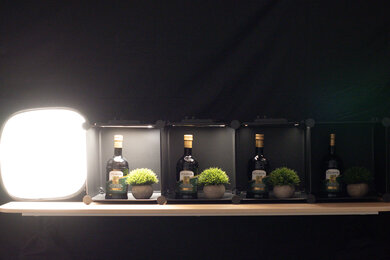
Dynamic range is excellent on the Nikon Z 50. It's comparable to other top-performing APS-C cameras like the Sony α6400 and isn't much worse than Nikon's entry-level full-frame, the Nikon Z 5 . Ultimately, it can capture a fairly wide range of detail in high-contrast scenes, but not as much as the latest full-frame cameras.
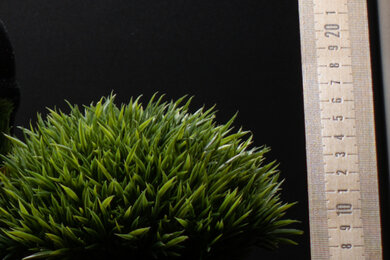
The Nikon Z50 uses a 20.9-megapixel sensor, so it can't resolve as much fine detail as models with higher-resolution sensors, like the Fujifilm X-T30 II or the Sony α6400 . That said, images are still very detailed, and you likely won't notice a huge difference unless you compare images when zoomed in at 100% or more. You'll have a tad less leeway for cropping photos, but the impact is minimal in practice, especially if you're just sharing your photos online.
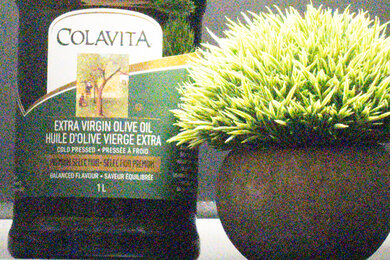
The camera has decent RAW noise handling overall. It performs roughly on par with APS-C peers and can capture photos without excessive noise in dim lighting conditions. However, noise still becomes more apparent with shorter exposure times.

There's a slight crop when shooting 4k video, but it isn't too bad and doesn't affect the field of view to a very noticeable degree. Unfortunately, there are no high frame rate options in 4k, making it harder to generate slow-motion footage. If you're looking for a camera that can record uncropped 4k video at up to 30 fps, the Canon EOS R10 is a solid option; the Canon can also record in 4k at 60 fps, but with a pretty severe crop.
The camera can only record 4k in 8-bit color, but it doesn't have any Log profiles with which you could take advantage of a higher bit depth, so it isn't an issue. The Nikon Z 50 isn't intended for advanced videographers who do more in-depth color grading; however, its internal recording capability is still suitable for more casual video shooting or creating YouTube content.
Autofocus is great in 4k. Unlike in photo mode, eye AF doesn't work for video, but its face detection feature works very well for tracking moving subjects. The general subject tracking is a bit less reliable but still does a great job of keeping subjects in focus if they're moving at a more moderate pace.
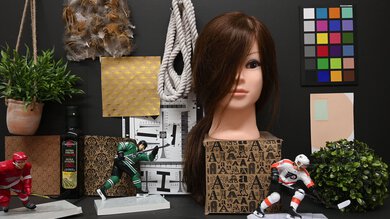
The 4k video quality is decent overall. The image looks sharp and detailed, and there's a bit less noise and more pop to the colors than on the comparable Sony a6400 . It's okay in low light, though you lose a lot of shadow detail in high-contrast lighting, and there's some unavoidable noise in really dim lighting.
Rolling shutter distortion is pretty bad in 4k. It's especially noticeable with very fast panning, but it's still better or on par with other APS-C models in its price range.
The camera can capture 1080p video at up to 120 fps, which is great for incorporating slow-motion shots into your videos.
The camera's internal recording specs are similar in FHD as they are to 4k. It's still limited to 8-bit 4:2:0 capture, giving you less leeway in processing. There's also a 30-minute cap on recording.
As with 4k, 1080p video autofocusing is very good. The camera's face detection and tracking feature does an excellent job of keeping moving subjects in focus. Manually selecting a subject for the camera to follow also gets good results, though the camera may still struggle to keep up with more erratic subjects.
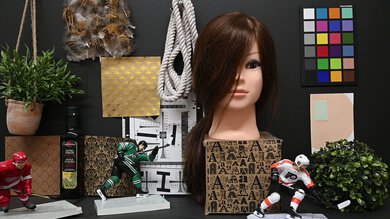
FHD video quality is decent. It performs well in brighter lighting conditions, with plenty of detail and colors that pop. However, low-light video doesn't quite hit the mark, with some noticeable noise and muddier details.
There's significantly less distortion from rolling shutter in 1080p compared to 4k recording. There's almost no visible slanting when panning the camera at a moderate pace, which is great for recording faster action.
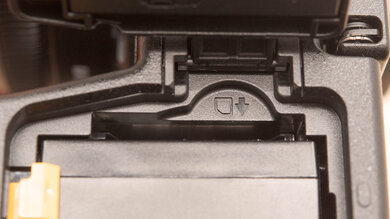
The SD card slot is located next to the battery and only supports UHS-I cards. The compartment is on the bottom of the camera, making it harder to switch out cards if you're using a tripod.

The camera uses the older Micro USB standard for charging and file transfer, which is disappointing and means the camera doesn't support external power delivery. Otherwise, there's a fair amount of inputs. You have a Micro HDMI port to connect an external monitor and a microphone jack. However, there's no headphone jack for in-camera audio monitoring.
- Global Home
- Global Network
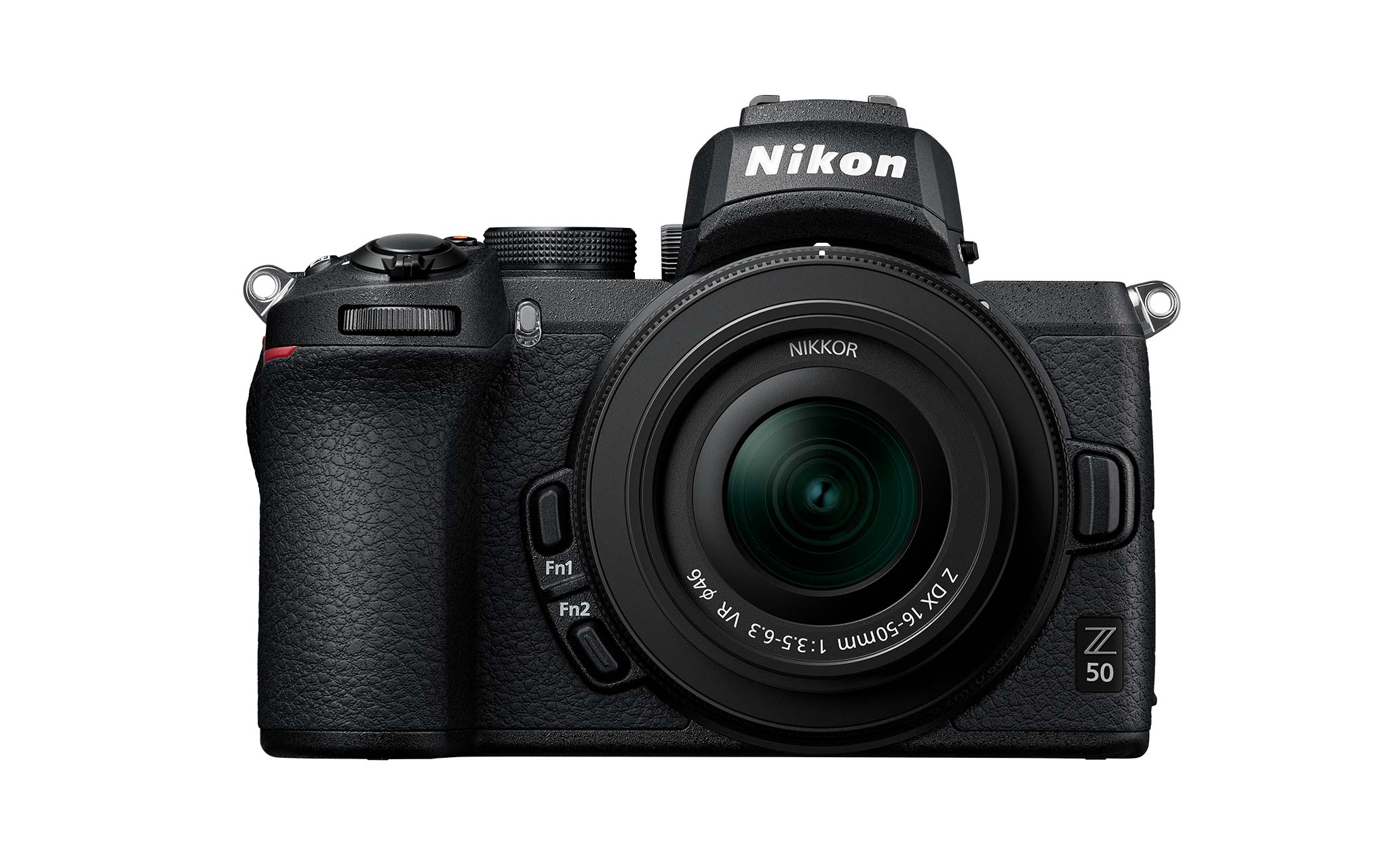
- 20.9 megapixels
- ISO 100-51200
- Up to 11 fps
- Eye-detection AF
- Creative Picture Controls
- 180° tilting monitor
- Touch screen
- Self-portrait mode
- Silent mode
- Powerful, compact, lightweight body, bringing more fun to image making
- Stunningly sharp pictures and videos - using the potential of the large-diameter Z-mount system
- Image sensor featuring 20.9 effective megapixels and class-leading high ISO of 51200 produces clean, noise-free images in low light
- 209 focus points offer wide AF coverage in the frame - approx. 87% horizontal and 85% vertical
- Eye-detection AF * for amazingly sharp and impressive portraits
- Select, confirm and shoot to get a unique look easily - 20 Creative Picture Controls
- 180° tilting monitor makes selfie shooting fun and easy
- Secure grip and intelligently arranged buttons provide easy and comfortable operation
- * When using auto-area AF in still photography.
Specifications
Type of camera, effective pixels, image sensor, white balance, wi-fi/bluetooth, supported languages, power source, tripod socket, dimensions/weight, operating environment, accessories.
- The SD, SDHC and SDXC logos are trademarks of the SD-3C, LLC.
- HDMI, the HDMI logo and High-Definition Multimedia Interface are trademarks or registered trademarks of HDMI Licensing LLC.
- Wi-Fi ® and the Wi-Fi logo are trademarks or registered trademarks of the Wi-Fi Alliance ® .
- The Bluetooth ® word mark and logos are registered trademarks owned by Bluetooth SIG, Inc. and any use of such marks by Nikon Corporation is under license.
- Other products and brand names are trademarks or registered trademarks of their respective companies.
- Specifications are subjects to change without notice.
Mirrorless Cameras
Nikon Z50 Hands-On Review – The Best Mirrorless Camera for Beginners? (with bonus video)
A Post By: Suzi Pratt

In November 2019, the Nikon Z50 debuted as an entry-level mirrorless camera for beginners. It is the first crop-sensor (DX) camera of the Z-series line, and it is much smaller and cheaper than the Nikon Z6 and Z7. This Nikon Z50 review will go over some key features of this camera and ultimately answer the question, “should you buy this camera?”
I tested this camera through the Nikon Yellow Program that allows you to try out the Nikon Z50 for 30 days, or return it for a full refund. This is a temporary pilot program that only lasts through March 2020, but I hope Nikon lets it run longer. The mirrorless camera market is a crowded one, and the only way for potential customers to truly know if a camera is suitable for them is to test it out for themselves.

Nikon Z50 Specs
The Nikon Z50 features are competitive with many modern APS-C mirrorless cameras such as the Sony a6400 , Canon EOS M6 Mark II , and Fujifilm X-T30 . Compared to the rest of these cameras, the Z50 is the largest and heaviest, but it offers some features that the competition does not.
- 20.9MP CMOS sensor
- Up to 11 fps shooting with AE/AF, 5 fps with live view
- 4K video at up to 30p and 120fps slow-motion capture at 1080p
- 2.36M-dot OLED viewfinder
- Rear touchscreen tilts up by 90° or down by 180°
- Built-in flash plus hot shoe mount to add external flash if desired
- Single SD memory card slot
- Deep grip for a comfortable hold
- Approximately 300-shot battery life
- Bluetooth-enabled Wi-Fi (via Snapbridge app)
- Compatible with the FTZ mount adapter to use F-mount DSLR lenses
- Priced at $860 (body-only) or $1000 (with 16-50mm) or $1350 (with 16-50 and 50-250)
Along with the Z50 camera body, Nikon also released two DX Z lenses to use with it. The Nikkor Z DX 16-50mm f/3.5-6.3 VR kit lens is super compact and basically a pancake lens. It’s a great size to keep your camera kit very small.
Meanwhile, the Nikkor Z DX 50-250mm f/4.5-6.3 VR is a telephoto lens with a great zoom range.
Both lenses are very plastic but lightweight and affordable as a result. If you want the maximum flexibility with the Nikon Z50, and don’t have any F-mount lenses to use, get both of these lenses.
One little quirk about both lenses: you have to rotate the zoom ring to extend the lenses before shooting with them. It only takes a few extra seconds, but it’s a strange thing to get used to.

Ease of Use
Camera layout.
The Nikon Z50 has a pretty straightforward layout.
All of the buttons and controls are on the right-hand side of the camera, making it easy to use one-handed. The biggest dial on top of the camera lets you select camera modes. There is Aperture Priority , Shutter Speed Priority, and Manual to appeal to the experienced photographer.
But the Z50 shows its colors as a beginner-friendly camera with the addition of several auto functions on the dial.
In addition to “P” and “Auto” modes, the Z50 has SCN or “Scene Mode” to automatically adjust the camera settings for a variety of situations, including Portrait , Landscape, Food , Night Portrait, Snow, Close up, and more.
There is also a dial selection “EFCT” for shooting in “Special Effect Mode,” where you can automatically see effects such as Night Vision, Super Vivid, and Pop applied to the scene before you snap a photo.
Many cameras have a similar scene and special effect modes in their settings, but they are usually buried deep in the menus and hard to find. On the Nikon Z50, these modes are literally at your fingertips, making them very accessible.
Touchscreen LCD
While you can use the physical buttons and dials on the camera to control settings, you don’t have to. The Nikon Z50 LCD touchscreen is very responsive and lets you select settings, set autofocus points, and swipe and pinch to zoom when previewing images.
The LCD screen also can flip down so you can see yourself when taking a selfie or filming a vlog . This is a feature that seems great at first – until you realize you can’t see the LCD screen if the camera is attached to a tripod. Ideally, the LCD screen would flip out to the side as it does on most Canon and Panasonic mirrorless cameras.
Speaking of selfies, I used the Z50 to snap a few family group portraits where I had to set the camera on a timer and run to be a part of them. A useful feature was the self-timer setting that included the option to take up to 9 photos in a row. This is so helpful in group settings when you will inevitably have closed eyes or goofy faces in some shots.

The Nikon Z50 comes with hybrid (phase and contrast detection) autofocus (AF) with 209 AF points. It also includes Eye AF and Subject Tracking. When paired with its 11 frames-per-second continuous shooting mode, this makes for a decent portrait and sports photography camera, in theory.
In practice, the autofocus performed decently, but still pales in comparison to other cameras, namely Sony, which is still king of autofocus. However, this is only a negative point for shooting fast-moving subjects. When working with still or slow subjects, the Z50’s autofocus is generally good.
I found the camera performed the best when left in single-point autofocus, where I could select the focus point myself. Word of caution – there is not a joystick for autofocus point selection. Instead, use the wheel or touchscreen.
Wireless transfer and smartphone connection
With the inclusion of extra auto modes and a flip screen, this is a camera geared toward influencers and those wanting to post photos and videos to social media .
Luckily, the Nikon Z50 is equipped with built-in Wi-Fi and Bluetooth, making it easy to transfer media to your phone. All you need to do is download the SnapBridge app to your phone and enable the Wi-Fi connection on the camera.
When using a Samsung Galaxy S10, photo transfer was very fast and intuitive; video transfer took a bit longer, which is understandable considering the larger size of video files.
Another cool feature is the ability to use your smartphone as a remote monitor to control the Z50. This function also worked very seamlessly.
Image Quality
When it comes to colors and image sharpness, the Nikon Z50 does not disappoint. For those who gripe about Sony color science, you won’t be disappointed with Nikon’s. Photos are great as JPGs straight out the camera, but you can also shoot in RAW format for more flexibility when editing photos in post-production.
As an APS-C camera, the Z50 does not have the best low light performance when compared to a full-frame camera. However, images captured at ISO 6400 are acceptable with just mild color speckles and image grain.

Nikon Z50, Nikkor Z DX 50-250mm f4.5-6.3 VR, Focal length: 250mm (in 35mm: 375mm), 1/400 sec, f6.3, ISO 12800, Aperture Priority, pattern metering
Video features
For those interested in filming, here is a quick Nikon Z50 review of the video features. Just like its big brothers, the Z7 and Z6, the Z50 can film in up to 4K30p resolution, plus 120fps slow motion at 1080p.
Unlike the Z6 and Z7 , the Z50 lacks IBIS (in-body image stabilization). This means that shooting handheld video or photos at low shutter speeds will be more challenging on the Z50.
However, this can be slightly alleviated if shooting with a lens that has VR (vibration reduction). Note that VR on lenses must be enabled via the Optical VR setting in the camera as the lenses do not have a VR switch.
The Z50 comes with both an Interval Timer Shooting Mode and a Timelapse Movie Mode. Both of these settings result in a timelapse, but the former will produce individual images that you must edit and stitch together in post-production.
Meanwhile, Timelapse Movie Mode automatically creates a timelapse video in-camera, and it is a wonderful feature that is very easy to use.
While the Z50 has a mic jack for attaching an external microphone, it lacks a headphone jack for simultaneously monitoring audio.
In terms of ports, the Z50 has only two: a micro HDMI port for adding an external monitor or viewing media on a TV, and a micro USB port for charging. It’s puzzling why a micro USB port was added instead of a USB-C port, but very helpful in that you can charge the camera via a wall plug or external battery.

Nikon Z50, Nikkor Z DX 16-50mm f3.5-6.3 VR, Focal length: 15mm (in 35mm: 25mm), 1/50 sec, f3.5, ISO 2000, Aperture Priority, pattern metering
In conclusion
If you are on the market for a beginner-friendly mirrorless camera, you have a LOT of options out there. As of January 2020, the Nikon Z50 is the newest of them all, and it offers many of the same features you’ll find on other similar cameras.
While it is not the best camera when it comes to features like autofocus, it is still a very capable camera that will give you high-quality stills and video in a small form factor. Its usability is also very intuitive, and its extra auto settings will get you up and shooting fairly quickly, even if you are a photography novice.
If you have any Nikon F-mount lenses, the Z50 is a great option, since you can use those lenses with the FTZ adapter. Even if you don’t have any lenses, the two optional DX kit lenses are a great deal and result in an ultra-lightweight kit with a flexible zoom range.
I hope you enjoyed this Nikon Z50 review . Please leave any thoughts or questions in the comments below!

Nikon Z50, Nikkor Z DX 16-50mm f3.5-6.3 VR, Focal length: 16mm (in 35mm: 24mm), 1/25 sec, f3.5, ISO 3200, Aperture Priority, pattern metering

Nikon Z50, Nikkor Z DX 16-50mm f3.5-6.3 VR, Focal length: 29mm (in 35mm: 43mm), 1/50 sec, f6.3, ISO 280, Aperture Priority, pattern metering

Nikon Z50, Nikkor Z DX 16-50mm f3.5-6.3 VR, Focal length: 29mm (in 35mm: 43mm), 1/80 sec, f6.3, ISO 280, Aperture Priority, pattern metering

Nikon Z50, Nikkor Z DX 50-250mm f4.5-6.3 VR, Focal length: 210mm (in 35mm: 315mm), 1/800 sec, f6, ISO 250, Aperture Priority, pattern metering

Nikon Z50, Nikkor Z DX 50-250mm f4.5-6.3 VR, Focal length: 75mm (in 35mm: 112mm), 1/320 sec, f6.3, ISO 250, Aperture Priority, pattern metering

Nikon Z50, Nikkor Z DX 50-250mm f4.5-6.3 VR, Focal length: 250mm (in 35mm: 375mm), 1/400 sec, f6.3, ISO 1100, Aperture Priority, pattern metering

Nikon Z50, Nikkor Z DX 50-250mm f4.5-6.3 VR, Focal length: 105mm (in 35mm: 157mm), 1/1250 sec, f6.3, ISO 250, Aperture Priority, pattern metering

Nikon Z50, Nikkor Z DX 50-250mm f4.5-6.3 VR, Focal length: 250mm (in 35mm: 375mm), 1/640 sec, f11, ISO 250, Aperture Priority, pattern metering

Nikon Z50, Nikkor Z DX 50-250mm f4.5-6.3 VR, Focal length: 50mm (in 35mm: 75mm), 1/250 sec, f11, ISO 250, Aperture Priority, pattern metering

Nikon Z50, Nikkor Z DX 16-50mm f3.5-6.3 VR, Focal length: 31.5mm (in 35mm: 47mm), 1/50 sec, f5, ISO 2500, Aperture Priority, pattern metering

Nikon Z50, Nikkor Z DX 16-50mm f3.5-6.3 VR, Focal length: 34mm (in 35mm: 51mm), 1/320 sec, f5, ISO 320, Aperture Priority, pattern metering

Nikon Z50, Nikkor Z DX 16-50mm f3.5-6.3 VR, Focal length: 16mm (in 35mm: 24mm), 1/800 sec, f6.3, ISO 320, Aperture Priority, pattern metering

Nikon Z50, Nikkor Z DX 50-250mm f4.5-6.3 VR, Focal length: 125mm (in 35mm: 187mm), 1/200 sec, f5.3, ISO 2200, Aperture Priority, pattern metering
Bonus video: The Nikon Z50 review.

Read more from our Cameras & Equipment category
is an internationally published Seattle event and food photographer . Her photos appear regularly in Eater and Getty Images. When she’s not taking photos, she’s making travel photography and camera gear videos for her YouTube channel .

- Guaranteed for 2 full months
- Pay by PayPal or Credit Card
- Instant Digital Download

- All our best articles for the week
- Fun photographic challenges
- Special offers and discounts

Nikon Z50 Review: updated for Vlogging
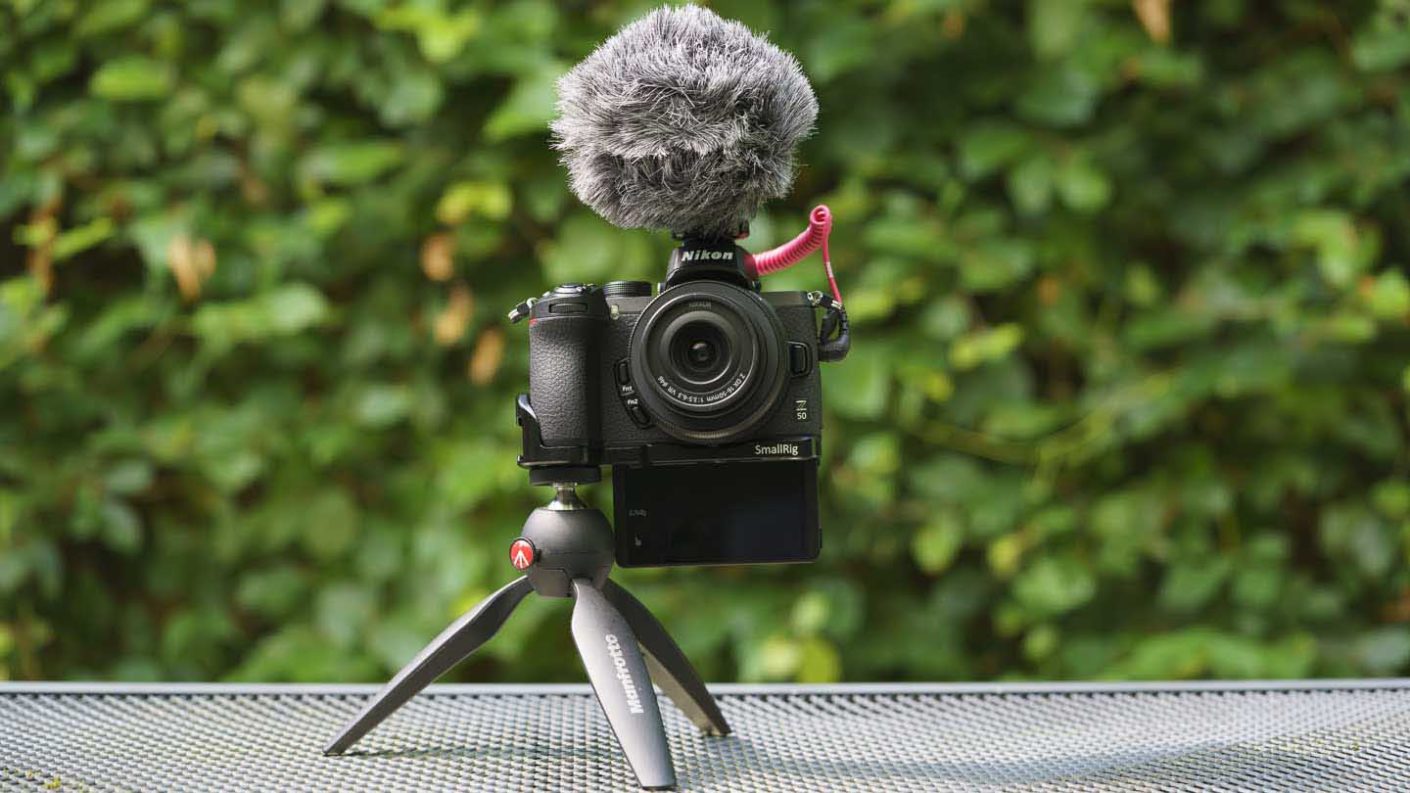
You Might Also Like…
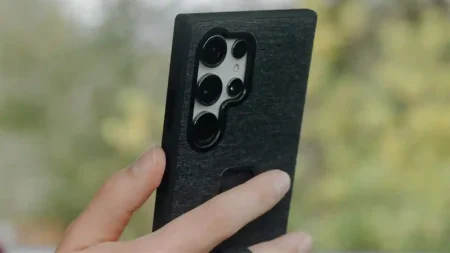
Peak Design Launches New Everyday Case for Samsung S24 Series

Sony FE 16-25mm F2.8 G lens announced
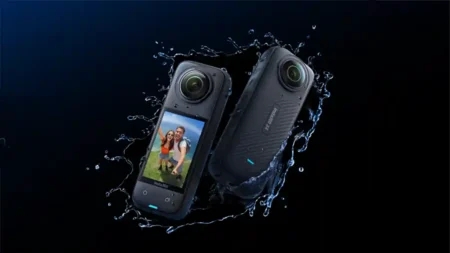
Insta360 X4 specs, price and availability announced
Tuesday August 11, 2020
By Angela Nicholson
Snap Verdict
The Nikon Z6 and Z7 are great, but not all photographers want a full-frame camera. Now there’s an alternative for Nikon users wanting a mirrorless camera, the Nikon Z50. It has plenty to offer experienced photographers, with a solid build and a comprehensive feature set. Thanks to its deep grip and small body, I love the way it feels in my hand. Its autofocus system is also excellent and it can get fast-moving subjects sharp and keep them that way in gloomy conditions. The Nikon Z50 also delivers great images and video, and despite a couple of niggles such as the lack of a joystick and the inability to use the screen to set the AF point while you look in the viewfinder, it’s become one of my favourite cameras of recent times.
Nikon may have been slow to embrace mirrorless technology, but it doesn’t feel like its cameras are playing catch up. There are also some very nice full-frame (FX) format Z lenses, but we need more APS-C (DX) format lenses.
Specifications
- Camera type: APS-C / DX (23.5×15.7mm) format mirrorless camera
- Sensor: 20.88Mp
- Processing engine: Expeed 6
- Lens mount: Nikon Z mount
- Sensitivity range: ISO 100-51,200; expands to 204,800
- Viewfinder: 0.39-inch 2,360,000-dot OLED electronic viewfinder
- Screen: Tilting 3.2–inch 1,040,000-dot touchscreen
- Autofocus: Hybrid (phase and contrast detection) AF with 209 AF points, Eye AF and Subject Tracking
- Continuous Shooting: 11fps with continuous AF and exposure metering
- Video: 4K at 30fps and Full-HD at 120fps
- Storage: SD/SDHC/SDXC UHS-I
- Connectivity: Snapbridge 2.6; Wi-Fi, Bluetooth
- Dimensions (W x H x D): 126.5 x 93.5 x 60 mm / 5 x 3.7 x 2.4-inches
- Weight: 450g / 15.9oz with battery and memory card but without body cap, 395g /14oz body only
You can order the Nikon Z50 at retailers such as Adorama and B&H Photo Video in the US, or from Wex Photo Video and Park Cameras in the UK.
What is the Nikon Z50?
Nikon is referring to the new Z50 as the mirrorless equivalent of the D7500. That means it’s aimed at enthusiast photographers. Of course, it could also appeal to people buying their first interchangeable lens camera.
As well as the usual body-only, single-lens and twin-lens kits, Nikon offers the Z50 in a Vlogger Kit. This includes the Z50 with the 16-50mm kit lens along with the SmallRig Vlogging Mounting Plate for Nikon Z50 Camera (LCN2525) Rode VideoMicro microphone and the Manfrotto Pixi mini tripod.
As it has an APS-C format sensor, or DX-format as Nikon calls it, the Z50 is a little smaller and more affordable than the full-frame Nikon Z6 and Z7. This will help give appeal to people who don’t count photography as their hobby, but who want a decent camera to photograph their main pastime.
However, the majority of Nikon Z50 buyers are likely to be existing Nikon DSLR owners who have a collection of F-mount lenses. They are able to use their current optics on the Z50 via the Nikon FTZ adaptor. I tested the Nikon Z7 and Z6 with adaptor and I found the focusing just as fast as when I used a native lens, while the image quality was every bit as good as I’d expect. I can see no reason why the same will not be true with the Z50
- Read our Nikon Z7 Review
Nikon Z50 Price & Release Date
The Nikon Z50 price tag starts at £849/$857 for the body only, but there are also a number of kits available featuring Nikon’s new lenses.
The Nikon Z50 price tag rises to £989/$997 with the Nikkor Z DX 16-50mm f/3.5-6.3 VR lens kit. A Nikon Z 50 + Nikkor Z DX 50–250mm f/4.5–6.3 VR & Nikkor Z DX 16-50mm f/3.5-6.3 VR lens kit is priced £1,199/$1,197.
A Nikon Z 50 + FTZ mount adapter kit is priced at £989. Alternatively the Nikon Z50 price for the camera body + Nikkor Z DX 16-50mm f/3.5-6.3 VR + FTZ mount adapter kit is £1,129.
The Vlogger Kit, which includes the Z50 and Nikkor Z DX 16-50mm f/3.5-6.3 VR lens along with the SmallRig Vlogging Mounting Plate for Nikon Z50 Camera LCN2525, Rode VideoMicro microphone and Manfrotto Pixi mini tripod retails for £1,049.
The Nikon Z50 release date was 7 November 2019.
- Best APS-C Cameras: what to look out for and what to buy in 2019
Inside the Nikon Z50 is a new 20.88Mp APS-C format sensor which is paired with the Expeed 6 processing engine. Together, these enable a native sensitivity range for stills of ISO 100-51,200 with expansion settings going all the way up to ISO 204,800. Meanwhile, the video range is ISO 100-25,600.
The fact that Nikon has kept the pixel count to 20-million rather than pushing to 24Mp or higher, should be good news for noise control. As well as benefiting image quality, this should also ensure good autofocus performance. Consequently, I’m anticipating that the Z50 will be a good all-rounder that’s capable of being used in gloomy conditions as well as bright daylight.
Thanks to the Expeed 6 processing engine, the Z50 can shoot at up to 11 frames per second with continuous autofocusing and exposure metering. This rate is achieved in Continuous High Plus mode while the maximum rate in Continuous High mode is 5fps.
There’s also a silent mode that uses the electronic shutter.
Unlike the Z6 and Z7, the Nikon Z50 has an SD card slot for image and video storage. The Z6 and Z7 each have a single XQD card slot.
Autofocus System
In a first for a Nikon DX (APS-C) format camera, the Z50 has phase detection pixels embedded in it. This Hybrid AF system has 209 points that cover 90% of the vertical and horizontal space.
Further good news is that the Z50 has both Subject Tracking and Eye AF modes. Eye AF is a must-have feature at the moment and it’s incredibly useful for portraits and social event photography.
Subject Tracking works in Auto-area AF mode and it’s useful for subjects that move erratically. Pressing the OK button in Auto-area AF mode activates a tracking point which is visible on the screen and in the viewfinder.
You then position this box over the subject and press the OK button again to start the tracking. As the subject moves, the Z50 tracks it around the frame, keeping it sharp in Continuous AF mode.
Read: Nikon Z6 and Z7 Autofocus System Explained
We expect a camera to be able to shoot 4K video now, and the Nikon Z50 can do so at 30fps. As usual, there’s a range of frame rates available for Full-HD video recording. The maximum value is 120fps, which is ideal for slowing down very fast action.
There’s a mic input to enable better quality sound to be recorded via an external mic. In an effort to keep down the size, Nikon hasn’t included a headphone port.
It’s also possible to create Time-lapse videos in-camera.
Although it has an APS-C format sensor, Nikon has given the Z50 the same lens mount as the full-frame Z6 and Z7.
The Z mount has a diameter of 55mm, that’s a big step-up from the 47mm of the F mount. Nikon made that move to lift some of the restrictions that the old mount imposed on lens design.
It also means that instead of being limited to maximum apertures of f/1.4 or f/1.2 at the very most, the Z-mount enables lenses with maximum apertures as big as f/0.95. We’ll soon be able to see how this shapes up in the form of the new Noct 58mm f/0.95.
While the diameter of the Z-mount is larger than the F-mount’s, the flange depth has reduced to 16mm. It’s that and the omission of the mirror that enables the Z-series cameras to be smaller than their DSLR counterparts.
Having the same mount as Nikon’s full-frame mirrorless cameras means that the lenses are interchangeable. So as well as being able to use Nikon F-mount lenses via the FTZ adapter, you can use native lenses such as the Nikkor Z 14-30mm f/4 S , Nikkor Z 24-70mm f/4 S , Nikkor Z 35mm f/1.8 S, Nikkor Z 50mm f/1.8 S and Nikkor Z 24-70mm f/2.8 S .
- Read our Nikon Nikkor Z 24-70mm f/4 review
Conversely, it’s also possible to mount APS-C (DX) format lenses like the new Nikkor Z 16-50mm VR and Nikkor Z 50-200mm VR lenses on full-frame Z cameras like the Z6 and Z7. However, when they’re mounted, the cameras crops to the DX/APS-C format.
The Z50 doesn’t have in-body stabilisation but the two new DX-format optics both feature Nikon’s VR technology to extend the hand-holdable shutter speed. With the 16-50mm there’s up to 4.5EV compensation while with the 50-250mm lens its to 5 stops.
- Read our Nikon Nikkor Z 24-70mm f/2.8 S review
Nikon Z Lens / S-Line Lens Roadmap
Nikon’s latest roadmap shows one more S-Line DX lens to come in the near future. This is a travel-zoom optic with a focal length of 18-140mm. That’s equivalent to a 27-210mm lens on a full-frame camera.
There are a further 13 FX lenses in the pipeline.
The 16-50mm and 50-250mm lenses are equivalent to 24-75mm and 75-375mm respectively.
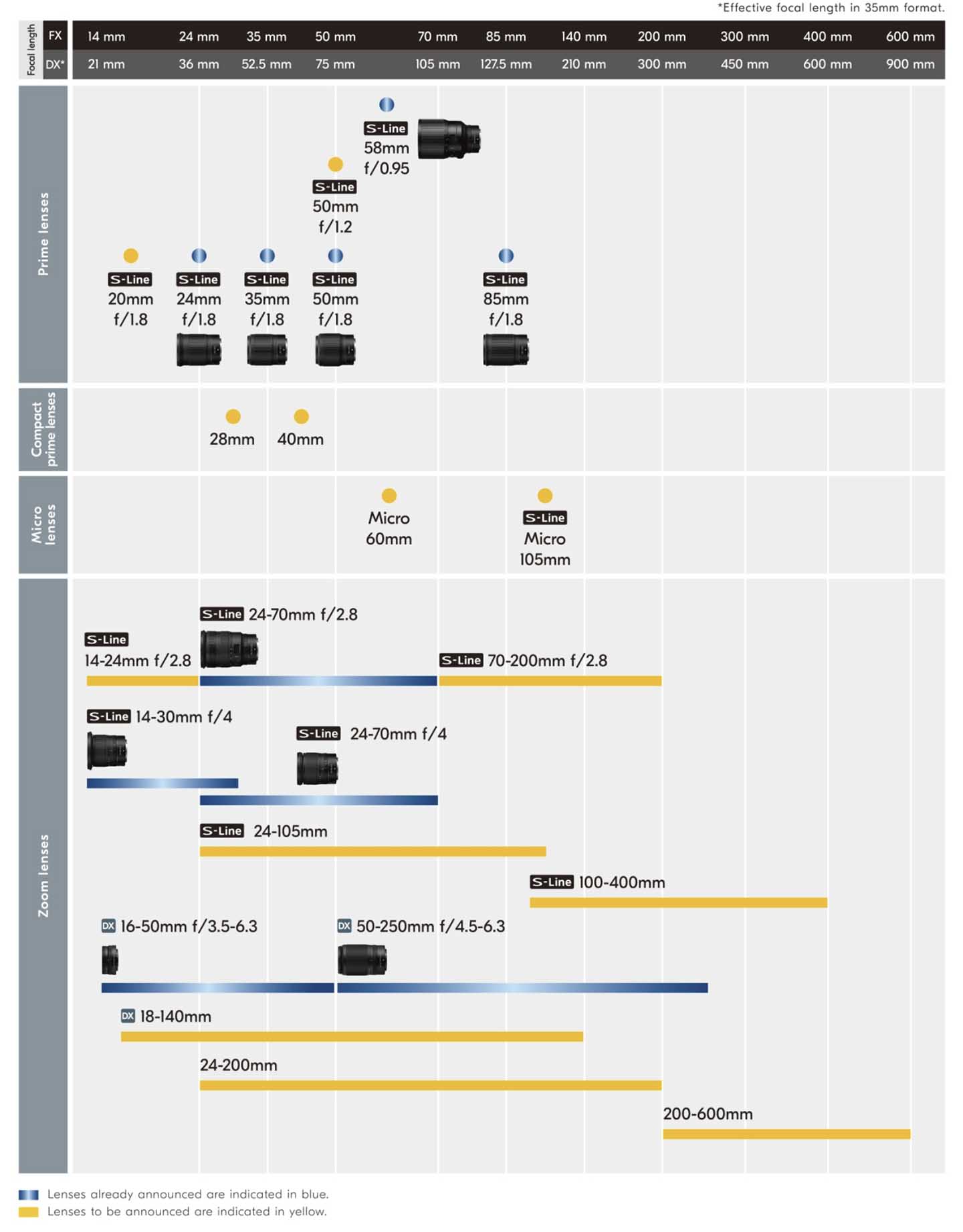
In addition to the hotshoe, the Z50 has a pop-up flash built-in. The camera is also compatible with Nikon’s WR wireless flash system via radio-control.
Wi-Fi and Bluetooth connectivity is built-in along with Nikon’s latest SnapsBridge system, SnapBridge 2.6. This enables the Z50 to be controlled remotely via a connected smartphone or tablet running Nikon’s free SnapBridge app.
SnapBridge can also automatically transfer images to a paired phone or tablet. This functionality has had a chequered history. I found it worked brilliantly with the Nikon D500 when it was first introduced, but there were issues with subsequent cameras and as operating system updates were made to compatible smartphones.
I’m happy to say that I’ve found there’s a return to form in the Z50. Once they were paired the Z50 and my iPhone chatted away happily. Even when they’d been apart for a while, they often reconnected and with the auto-transfer feature enabled, low-resolution versions of the images I shot on the camera were pinged to my phone very quickly. When there was the odd breakdown in communication, just needed to start the Snapbridge app on my phone and both parties seemed to get the idea and reconnect.
Also, the Z50 is compatible with Nikon’s ML-L7 Wireless Remote Control.
- Read our Nikon Nikkor Z 14-30mm f/4 S review
According to CIPA testing, the Z50’s EN-EL25 battery has a 300-shot life. In normal use, it’s likely to be a bit longer than that, I got over 400 images and several minutes of video clips during one shoot and the level only dropped to two-thirds. However, a second battery could be a wise investment.
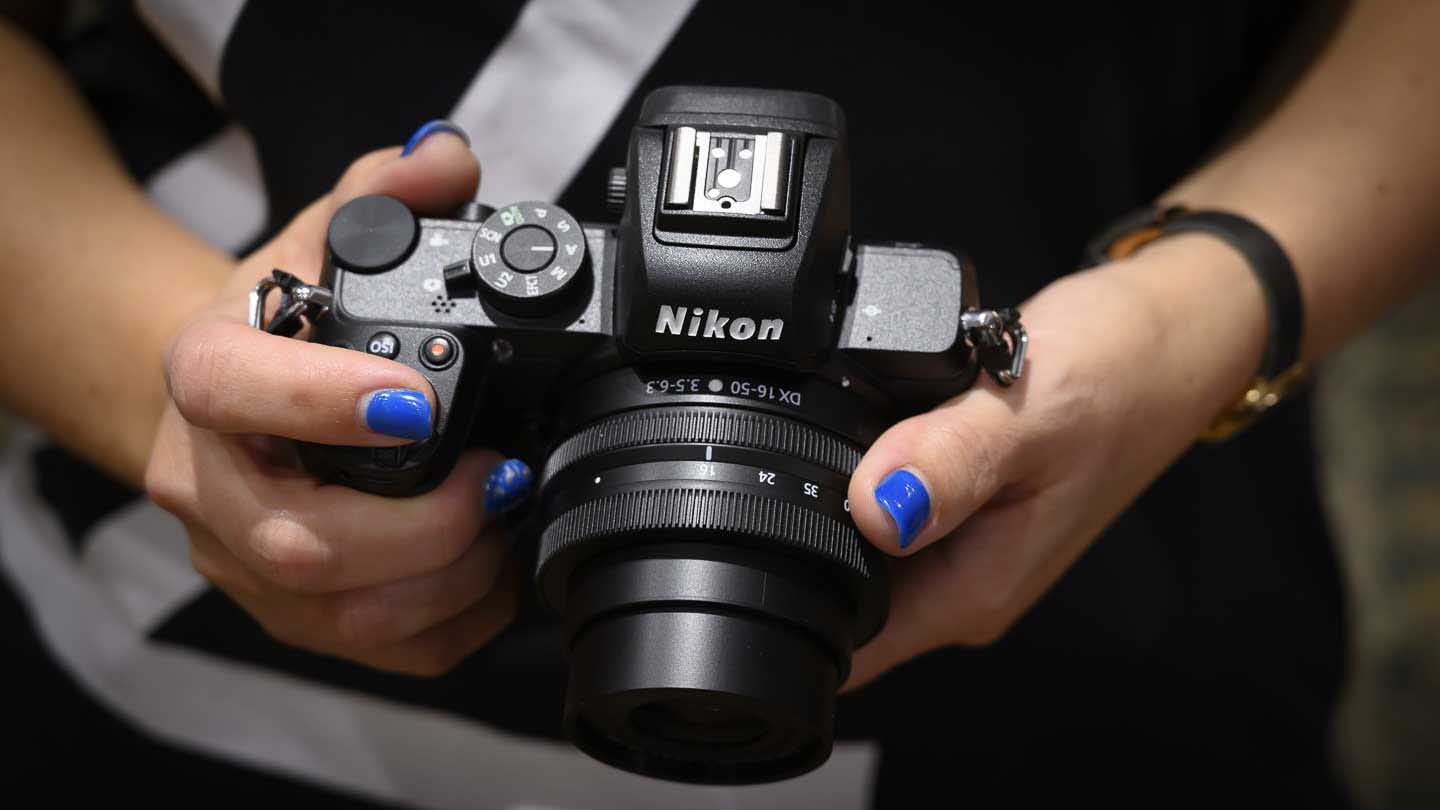
Build and Handling
Although the Nikon Z50 is smaller than the Z6 and Z7, it looks very similar. And while there are advantages to a small camera, Nikon hasn’t gone all-out in the pursuit of downsizing. Consequently, I think the average Nikon DX-format DSLR users will be happy with the feel of the Z50, it’s not a fiddly little camera and there’s a good-sized grip.
The Z50 feels fairly solid. Its front and top plates are made from metal and it’s weatherproof to the same standard as the D7500. I tested that weatherproofing during a downpour at a rugby match and the camera and 50-250mm survived.
As with the Z6 and Z7, existing Nikon DSLR users will find they are on familiar ground with the Z50. The interface is instantly recognisable as Nikon’s.
Tilting Screen
Although it’s a relatively small camera, Nikon has given the Z50 a 3.2-inch touchscreen. This has 1,040,000 dots and is mounted on a tilting bracket.
This bracket enables the screen to be tilted up or down for viewing from above or below. It can tilt down through 180-degrees for viewing from in front of the camera so shoot selfies or for vlogging. The problem with a screen that tilts down is that the view is blocked if the camera is mounted on a tripod.
According to Jeremy Gilbert, Marketing Director Nikon Northern Europe, the tilting mechanism was selected over a vary-angle screen for its greater robustness and reliability.
While I get the point that a tilting hinge is more robust and more affordable than a vari-angle screen, plus adding a vari-angle screen would make the camera, bigger, it’s natural to support the camera from underneath when you’re shooting a hand-held selfie. This blocks a bit of the screen.
I tried vlogging with the camera held in my left hand so I could use the grip and see the screen, and it was okay. But as a right-hander, using my left hand feels wrong. Thankfully, SmallRig has a solution in the form of the Vlogging Mounting Plate for Nikon Z50 Camera LCN2525, which retails for $28.90 by itself and is included in Nikon’s Z50 Vlogger Kit. More on this later.
Touch-control
When the screen is flipped down, the physical button control is reduced to minimise accidental setting changes and the touchscreen comes to the fore.
The Z50’s screen is very responsive to touch and you can use it to make setting selections and adjustments via the main or Info menu.
One thing you can’t currently do, however, in use the screen to set the AF point while you look in the viewfinder. That’s disappointing as there’s no joystick control either. Nikon UK’s representative indicated that there may be a firmware update to give the screen this functionality.
As it stands, the AF point is shifted via the navigation pad while you look in the viewfinder. If you’re using the screen, you can just set the point with a tap of your finger.
Interestingly, the Z50’s screen has a column of icons etched on to its right side. These are active touch-sensitive buttons that give access to useful features such as the magnification control, help and display options.
As the Z50 is a mirrorless camera, it has an electronic viewfinder (EVF). Nikon has plumped for a 2.36-million-dot unit. That’s lower resolution than the 3.6million-dot EVF’s in the Z6 and Z7 but there’s less area to cover, so the density is likely to be similar.
The Z50’s EVF also has the same elements as the Z6 and Z7’s, which is good news from a clarity point of the view. And I haven’t noticed the chromatic aberration that the Z6 and Z7 EVFs are prone to
Browsing through the images I’ve captured on the Z50 during my testing confirms that the viewfinder gives a good preview of the scene. In the default settings, its contrast and saturation can be a little on the high side, but it’s not excessive and the exposure is a good match.
The top-plate of the Z50 is fairly clean with just a mode dial, command dial and the power switch around the shutter release. Just beneath this, there’s a sub-command dial for making setting adjustments.
The front of the camera also has two customisable function buttons near the lens mount. They’re within convenient reach of your fingers around the grip.
I customised the control arrangement so I can adjust exposure compensation using the manual focus ring on the lens. This reverts back to its normal duty if you switch to manual focusing mode, but I find that very rarely necessary with the Z50. I love how this allows me to adjust the exposure so easily while I’m looking in the viewfinder.
- Read our Nikon Z6 review
Nikon Z50 Vlogger Kit
When SmallRig unveiled the Vlogging Mounting Plate for Nikon Z50 Camera LCN2525, it solved the problem of not being able to see the screen from in front of the camera when the Z50 is on a tripod. This plate screws onto the bottom of the camera and has a lip or ridge along its front that’s shaped to fit around the Z50, holding it in place and preventing it from twisting around.

Just in front of the screw to mount the SmallRig plate onto the Z50, there’s a threaded hole that can accept a tripod quick release plate screw, so you can mount the camera more-or-less as normal on a tripod. However, the clever part is that there’s a series of threaded holes on the right side of the plate, underneath the Z50’s grip. These allow you to mount the camera on a tripod without obscuring the screen.
Nikon includes the SmallRig Vlogging Mounting Plate for Nikon Z50 Camera LCN2525 in a Vlogger Kit with the Z50 and 16-50mm lens. As I mentioned earlier, the kit also includes a Rode VideoMicro microphone and Manfrotto Pixi mini tripod.

The Manfrotto Pixi can screw into any of the tripod bushes in the SmallRig plate. I found that if you want to flip the Z50’s screen down to view it from in front of the camera, you need to use one of the middle or outer threaded holes under the camera’s grip. You also need to position the legs of the tripod carefully to ensure the camera stays upright.
When the Manfrotto Pixi’s legs are closed, it makes an ergonomically-shaped handle beneath the camera, leaving the screen clear to see.
Helpfully, the Rode VideoMicro microphone comes with both a shock-mount and a windshield. The shock mount slips neatly into the camera’s hotshoe while the supplied cable connects the mic to the Z50’s 3.5mm mic port.
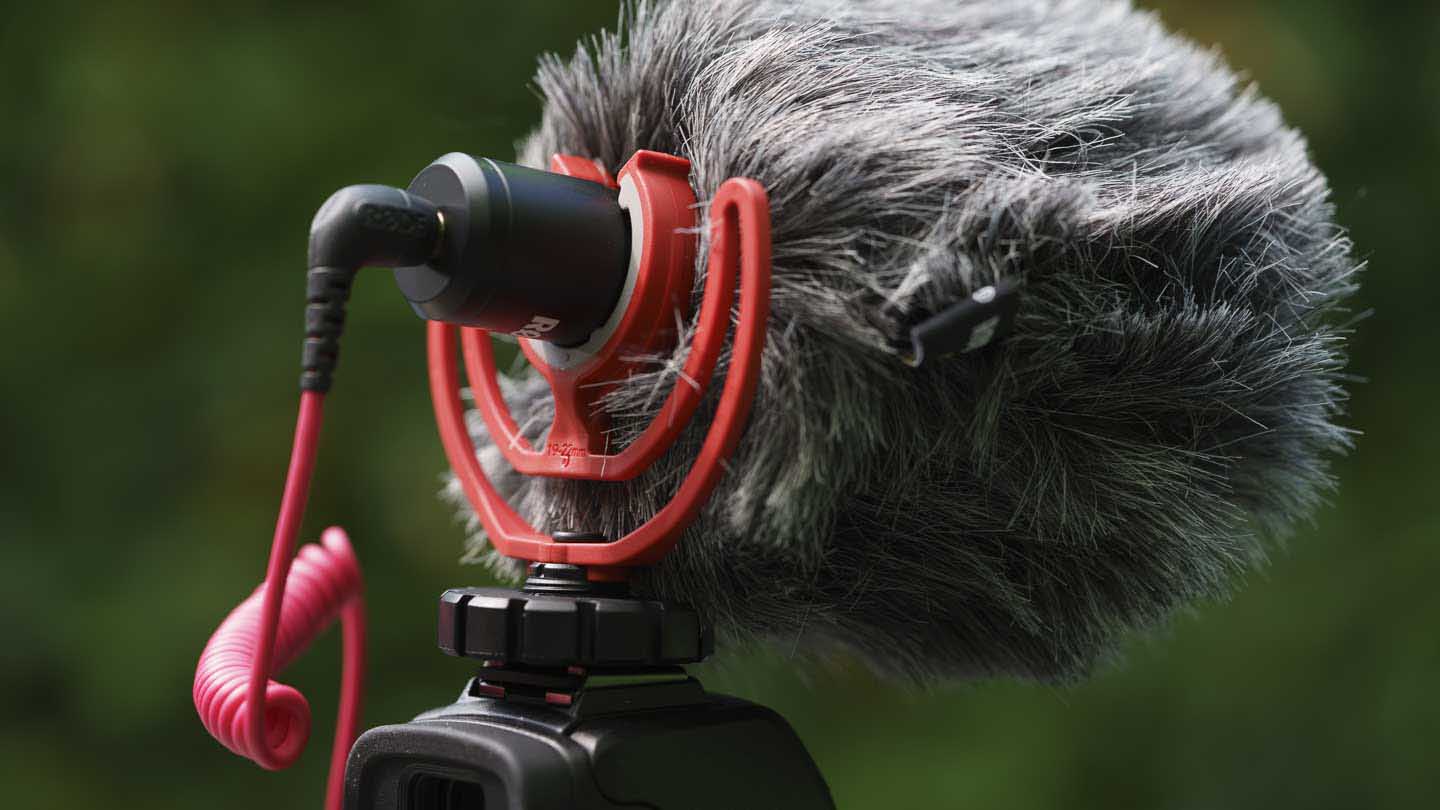
Using the Rode VideoMicro microphone significantly improves the audio recorded on the Z50, while the windshield helps to keep wind noise down. I kept the mic pointing forwards throughout the video below, and as you’ll hear, the sound is best when the mic is pointing at the main subject. When I was talking behind the camera, the background noise becomes more noticeable.
While the SmallRig Vlogging Mounting Plate fixes securely onto the Z50 and solves the problem of not being able to see the screen from the front when the camera is on a tripod, it brings a couple of issues of its own. The first is that you have to remove the plate in order to change the battery or the SD card. That’s not a massive issue, but something to note.
SmallRig makes this a little less inconvenient than it might otherwise be by including a small round screwdriver on the plate. This is held on the plate by magnets, so it’s easy to find and use when you need it.
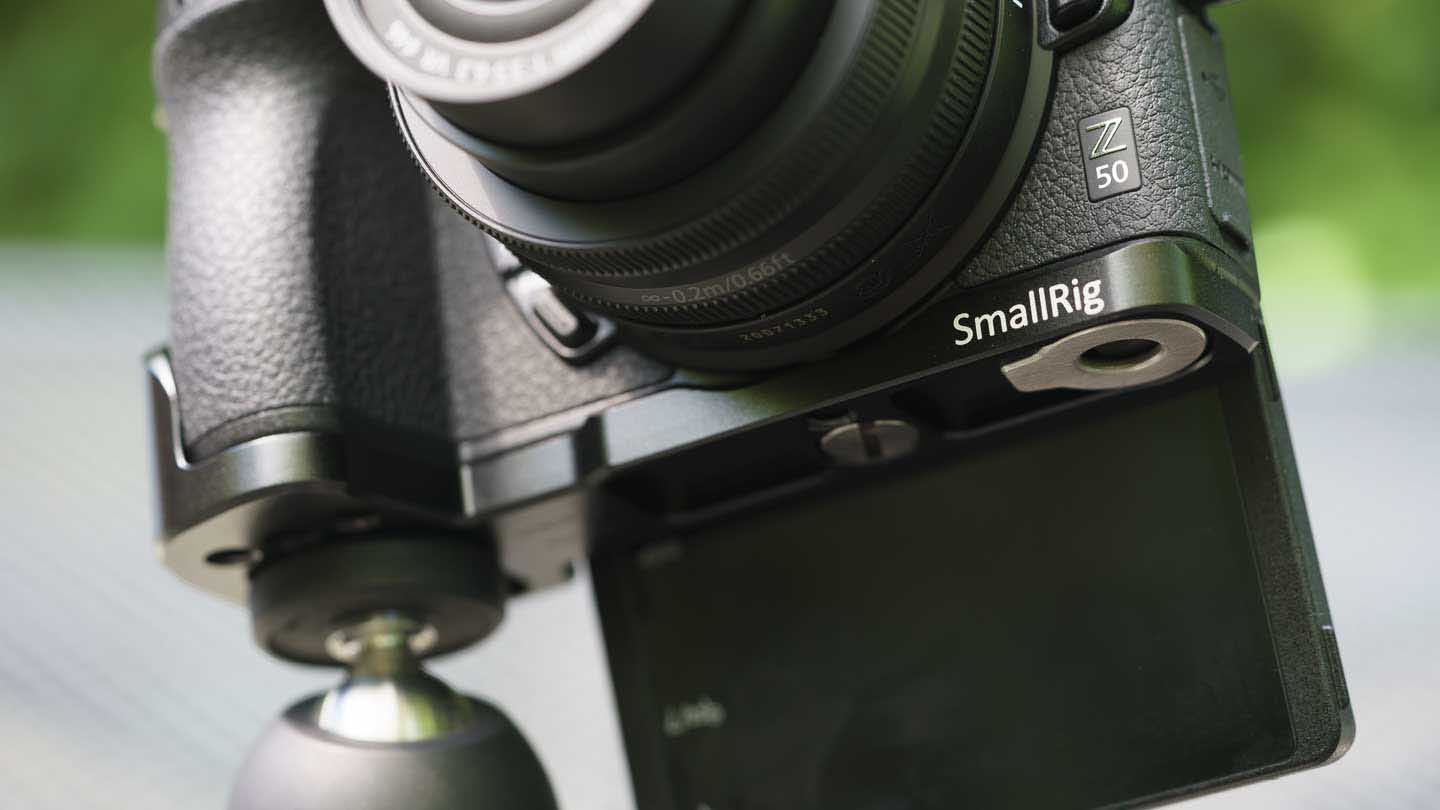
The other problem is that the SmallRig plate covers a small section of the top of the Z50’s screen when it’s flipped down for viewing from in front of the camera. This is where the red ‘record’ indicator is, so if you’re shooting with the camera in front of you, you can’t actually be sure that it’s recording. The solution is either to trust that you’ve pressed the record button correctly or to set the camera recording while you have the screen tilted back a little so you can see the indicator and then flip the screen down and carry on shooting.
Ideally, Nikon needs to issue a firmware update that moves the location of the record indicator (or gives this as an option). Alternatively, the camera could put a red box around the frame when it’s recording to make it even more obvious.
Despite these issues, the Nikon Z50 Vlogger Kit is a great package.
Performance
The image quality from Nikon’s recent DSLRs and the Z6 and Z7 has impressed us and the Z50 does not disappoint.
Of course, as the imaging sensor is used to assess white balance and exposure with the Z50, and there’s an electronic viewfinder that can show the image as it will be captured, there should be no excuses for dodgy exposures. But the Z50’s Matrix metering system still impresses with its ability to cope with large bright areas in the background.
You can’t leave the camera completely to its own devices when it comes to the exposure, but it does a very good job. Sometimes it pays to reduce the exposure by 0.3Ev to boost the colour saturation a little.
Image Colour
On the colour front, the Z50 also performs well. I tend to favour the Neutral and Standard Picture Control settings. The others, including the Creative options are handy on occasion. With a little contrast boost, the Monochrome mode can produce nice results.
There are four auto white balance settings. The first, ‘Natural light auto’ is good in the conditions it’s intended for. It delivers natural-looking images. There’s also ‘Keep white (reduce warm colors), ‘Keep overall atmosphere’ and ‘Keep warm lighting colors’. Keep white is very handy and effective in artificial light, but it can be useful in the shade as well.
It’s well worth experimenting with the various options to see which produces the result you like. And of course, you can preview their impact in the viewfinder or on the screen before you even take a shot.
Image Quality
I find the Z50 maintains detail levels well up to about ISO 6400 or ISo 12,800. You can see some coloured speckling if you look at ISO 12,800 images at 100%, but it’s not bad. You may even get acceptable shots at higher values, but there’s some loss of detail and smoothing visible here and there in Jpegs and raw files. With that in mind, I’d aim to make ISO 12,800 the maximum value but try to stay under ISO 6,400 when possible.
In addition, the quality of the 4K video is excellent.
Dynamic Range
When you’re shooting it’s clear that the Z50 can capture a wide range of tones. It doesn’t lose the highlights or block up the shadows too readily. And if you need to brighten your raw files when you’re processing your images, you’ll find that they are pretty elastic. In some cases, you can brighten shadows by 4Ev or more without noise becoming excessively visible or the colour being badly desaturated.
- Read Nikon Z 6 and Z 7 autofocus system explained

Autofocus Performance
The Z50 is the first Nikon DX-format camera to have on-chip phase detection pixels and its autofocus (AF) system is very good indeed. I shot a rugby match on very overcast December afternoon, complete with torrential rain for part of it, and it did a great job of getting the subject sharp and keep it so.
I was shooting with the new Nikkor Z DX 50-250mm f/4.5-6.3 VR lens. That means for much of the time I was shooting at f/6.3. That’s hardly ideal for the low-light conditions, but it did a brilliant job.
In continuous AF mode, I was able to get sharp images in each of the AF point selection modes, Single-point AF, Dynamic-area AF, Wide-area AF (Small), Wide-area AF (Large) and Auto-area AF. However, I found Wide-area AF (Small) and Wide-area AF (Large) gave me the best results. They make it far easier to keep the active area over a moving subject than Single-point AF. They also allow you to target the focusing more than Auto-area AF, so it doesn’t switch to a different player while you’re shooting.
Subject Tracking
I also tried using the Subject Tracking option with the rugby, but it got distracted by lots of players milling around the scene. However, I was very impressed by how well it performed when I photographed my dog. I photographed him in a forest and despite the dim conditions, and the fact that he’s brown so he blends in well with all the fallen leaves, it kept him in focus as he raced around.
Also, when the Z50’s Face Detection system is activated, it spots faces very quickly. If it identifies more than one face, it puts a box around the face it’s going to prioritise with an arrow indicating the navigation key that’s required to jump to another face. It’s super-easy to use.
In addition, the Eye AF system is pretty snappy to spot an eye in the frame.
- Read how to use Nikon Eye AF
Shooting Action
As I mentioned earlier, the Z50 can shoot at 11fps in High-speed continuous (extended) also know as High-speed continuous plus mode. That’s great for capturing fast action, and the camera can focus sontinusally in that mode.
However, there’s some blackout visible in the viewfinder and screen. I still found I was able to keep up with rugby players as they ran around the pitch, but dropping to High-speed continuous mode and shooting at 5fps makes them easier to follow in the viewfinder.
Sample Images
Follow the link to browse and download full-resolution sample images from the Nikon Z50 .
[FAG id=89389]
Sample Video
This video was shot using the Nikon Z50 in 4K 30p with the Flat Picture Control. It’s direct from the camera with no grading. The audio was recorded using the internal mic and there’s some wind noise.
This short vlog was shot using the Z50 in 4K at 30p with the internal mic.
This video was shot in 4K at 30p using the Nikon Z50 mounted on a Movo MTP-20 Programmable Tripod Head as it makes 360-degree rotations. The Z50’s inbuilt mic was used for the first rotation and the Movo VXR10 Universal Cardioid Mic was used (with its windshield) for the second
I love how the Z50 feels in my hand and it makes a tidy little unit with the 16-50mm pancake lens. Stash the 50-250mm f/4.5-6.3 lens in a bag, and you’ve got a really versatile kit. It felt strange to be able to travel so light to photograph a rugby match. I’d normally want to take a faster lens to shoot sport but the 50-250mm is nice and light, plus the results I got are great.
The grip is excellent and after shooting in heavy rain for 20 minutes or so, I can confirm that the camera is weatherproof.
I’m slightly disappointed by the lack of a joystick and the inability to use the screen to set the AF point while you look in the viewfinder. I’d also prefer a vari-angle screen. However, the additional control and change to the screen would add bulk and cost to the camera. Maybe these features will come to a camera between the Z50 and Z6?
Overall, however, I think that Nikon has done a good job of gauging what its customers want from a camera. I’m sure there will be a few who are wishing that the Z50 had a 24Mp sensor rather than a 20Mp chip, but I think they won’t be disappointed by the image quality.
At present, there are only two DX format Z lenses and there’s another listed on the lens roadmap. While existing Nikon users can mount their DSLR optics via the FTZ adapter, there needs to be more directly compatible lens.
On a final note, I love Nikon’s Snapbridge system in the Z50. It means you can shoot with a dedicated camera and have the images on your phone in an instant. It’s amazing how often that’s useful these days.
We noticed you're using an Adblocker. We're three photographers who do this because it's our passion. It's the ads the keep this site going and help us pay our bills. If you like our content, please consider turning your Adblock software off!
The best lenses for the Nikon Z50 in 2024
What are the best lenses for the Nikon Z50, Nikon’s first and still perhaps its most practical APS-C mirrorless camera?
The Quick List
- Best everyday lens
- Best wide-angle
- Best standard prime
- Best for travel
- Best telephoto
- Best for macro
- How to choose
- How we test
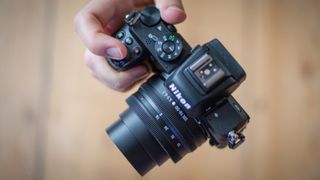
The Quick List ↩ 1. Best everyday lens 2. Best wide-angle 3. Best standard prime 4. Best for travel 5. Best telephoto 6. Best for macro How to choose How we test
When choosing the best lenses for the Nikon Z50 you have to take a few things into account. One is that this mirrorless camera uses an APS-C sensor, so while you can fit full-frame Nikon lenses to this camera, there is a 1.5x ‘crop factor’ that means they have a narrower angle of view.
The Nikon Z50 is one of the best Nikon cameras for beginners and enthusiasts, but its smaller sensor does need to be taken into account. For some lens types, like telephotos or macro lenses, this crop factor doesn’t matter and can even be an advantage. But for standard zoom lenses or wide-angle lenses, you need lenses designed specifically for the smaller sensor size to get the angle of view you need. In the Nikon range, these have ‘DX’ in the lens name. Other makers specify whether their lenses are full frame or APS-C format. We have a separate guide to the best Nikon Z lenses , but not all of them will be suitable for the Z50.
The Nikon Z50 was launched in October 2019. Since then there have been two more DX-format cameras – the retro styled Nikon Z fc and the compact and affordable Nikon Z30 vlogging camera.
The range of DX-format lenses has been slow to develop, though. There’s a choice of standard zooms, a very good telephoto zoom and a selection of reasonably priced prime lenses which will also work on full frame cameras. Perhaps Nikon sees the Z50 as a stepping stone for new users to eventually move on up to a full frame model like the Nikon Z5 , Nikon Z6 II or Nikon Z7 II .
One final point is that most people will have chosen the Nikon Z50 for its affordable price tag, so we need to stick to lenses that reflect that!

Rod is an independent photography journalist and editor, and a long-standing Digital Camera World contributor, having previously worked as DCW's Group Reviews Editor. He has used practically every interchangeable-lens camera launched in the past 20 years, from entry-level DSLRs to medium-format cameras, so he has the expertise to select the best Nikon lenses for you.
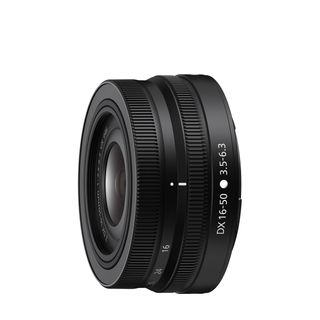
If you didn’t get this lens when you bought your Z50, you probably should: it’s tailor-made for daily shooting. Read more below…
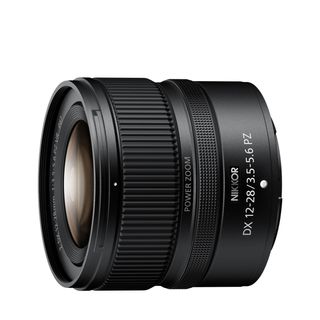
This zoom is made with video in mind, but it’s a very capable option for landscape and interior stills as well. Read more below…
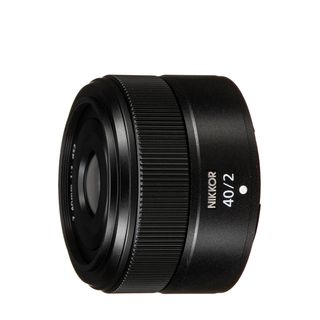
The wide aperture in this prime means you can get lovely background blur to help your subject stand out. Read more below…
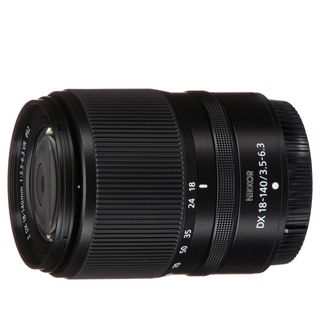
You get a very versatile focal length range from this zoom, so when you’ve only got packing space for one lens, this is the one. Read more below…
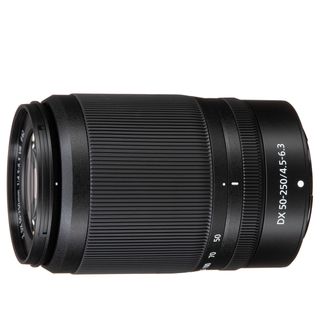
Most Nikon Z-mount telephoto lenses are big, heavy and expensive; this one bucks the trend in all three respects. Read more below…
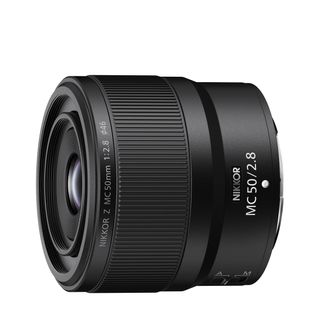
You can get lifesize images of tiny objects with this capable prime, which makes a decent portrait lens too. Read more below…
Best lenses for the Nikon Z50 in 2024
Why you can trust Digital Camera World Our expert reviewers spend hours testing and comparing products and services so you can choose the best for you. Find out how we test.
Best everyday lens for the Z50
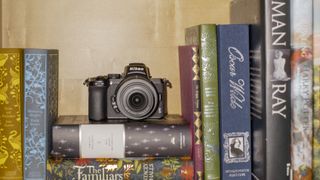
1. Nikon Z DX 16-50mm f/3.5-6.3 VR
Our expert review:
Specifications
Reasons to buy, reasons to avoid.
If you've already got a Nikon Z50, the chances are this kit lens came with it. If not, it's well worth getting as a standard zoom, even though you pay more if you buy the camera and lens separately. There is always the longer-range Nikon Z 18-140mm standard zoom to consider too, but this is a much larger lens, and more expensive too.
The Z DX 16-50mm f/3.5-6.3 VR arguably qualifies as a pancake lens: it’s just 32mm long when retracted. It has a plastic mounting plate rather than a metal one, but it still feels solid enough to cope with daily shooting, which its focal length range is ideal for. Its level of detail and contrast remain strong even when you shoot wide-open.
As well as the regular black edition, there’s a silver version of the lens to match the Nikon Z fc’s retro styling.
Read more: Nikon Z DX 16-50mm f/3.5-6.3 VR review
- Back to the top ⤴
Best wide-angle lens for the Z50
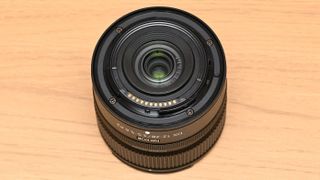
2. Nikon Z DX 12-28mm f/3.5-5.6 PZ VR
This is a really versatile lens. Its wide angle of view and motorized zoom are offered with video creators in mind – think vlogging and YouTube . But it’s a very capable stills lens as well, ideal for landscapes and interiors. Its light weight means you won’t resent taking it on location either. As if that wasn’t enough, the price tag is pretty competitive as well.
Read more: Nikon Z DX 12-28mm f/3.5-5.6 PZ VR review
Best standard prime lens for the Z50

3. Nikon Z 40mm f/2
This prime (non-zoom) lens is designed for full-frame Nikon Z cameras (you can tell because of the missing ‘DX’ in its name), but also works well on the Z50 because of its small size and reasonable price. On the Z50, this lens has an equivalent focal length of 60mm, which equates to a slightly 'long' but still perfectly practical standard lens, or perhaps a ‘short’ portrait lens.
The f/2 maximum aperture makes it the fastest lens in our round-up, and also the best choice for any Z50 users who like background blur, either in stills or video. Optically, it brings very decent sharpness and pleasing bokeh. The autofocus system is both fast and quiet.
Read more: Nikon Z 40mm f/2 review
Best travel lens for the Z50

4. Nikon Z DX 18-140mm f/3.5-6.3 VR
When you take the Z50 image sensor’s crop factor into account, this zoom has a focal length range equivalent to 27-210mm, which is highly versatile while also covering the classic telephoto range of 70-200mm. It’s a good choice for when you need to travel with just one lens, and is light enough that you won’t mind carrying it around. The customizable control ring and nice bonus.
It delivers good levels of sharpness, only dropping off slightly at the long end, and also benefits from 5-stop optical stablization to compensate for camera shake.
Read more: Nikon Z DX 18-140mm f/3.5-6.3 VR review
Best telephoto lens for the Z50
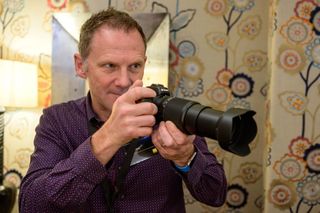
5. Nikon Z DX 50-250mm f/4.5-6.3 VR
You can use Nikon's full-frame telephoto lenses on the Nikon Z50 and its smaller sensor's 'crop factor' will give them 1.5 times the magnification. But full-frame Nikon Z telephotos are big and expensive. This lens is a cheaper and more practical option for the Z50 – and, if you bought the Z50 as a twin-lens kit that includes this, you got yourself a real bargain.
This telephoto lens has an effective focal length range of 75-375mm in full-frame terms, taking it into super-telephoto territory. But it’s much smaller and lighter than you’d expect for a lens with that reach.
We found it enjoyable to use during our testing: it balances nicely on the Z50, and its controls are lovely and smooth. You can choose from several functions for the control ring. 5-stop image stabilization helps to mitigate against the inevitable camera shake you’ll encounter at the long end.
Read more: Nikon Z DX 50-250mm f/4.5-6.3 VR review
Best macro lens for the Z50
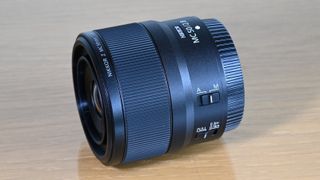
6. Nikon Z MC 50mm f/2.8
There’s a lot to love about this compact and light lens. Its main function is as a macro lens, where it offers lifesize magnification – although you do have to get very close to your subject to get that. For general shooting, its effective focal length on the Z50 is 75mm, which is about the starting point for telephoto shooting, or an acceptable portrait lens.
Read more: Nikon Z MC 50mm f/2.8 review
How to choose the best lens for the Nikon Z50
Which lenses fit the nikon z50.
The Z50 uses the Nikon Z mount and is compatible with all lenses designed for that mount. Nikon’s own Z-mount lenses all have Z at the start of their model names.
You can can use any Z-mount lens on the Z50, although some Z-mount lenses are designed for use with APS-C format cameras such as the Z50, rather than full-frame cameras. Nikon lenses that fall into this category have DX as part of their model names. These lenses are typically smaller, lighter and cheaper than the equivalents designed for full-frame cameras.
If you buy a DX lens and later upgrade to a full-frame Nikon Z camera, the image you get through the DX lens will be cropped compared with a full-frame lens.
The Z50 is also able to use F-mount lenses, which are made for use with Nikon’s DSLR cameras. For this, you need an adaptor such as the Nikon Mount Adapter FTZ II. The idea is that owners of older DLSR cameras can buy a Z camera and still use their old lenses.
How do I know which lens to get for my Z50?
The reason there are so many types of lens in the first place is that different scenes demand different lens designs, particularly when it comes to focal length and aperture rating.
Usually, you will decide what you want to photograph, then get a lens with the focal length that suits the situation. For example, to shoot landscapes you will need a wide-angle lens, while for sports and wildlife you will need a telephoto.
You can watch this video that explains focal length : it helps you work out what kind of lenses you need for different genres of photography.
How we test lenses
The lens experts in our testing lab run a range of tests under controlled conditions, using the Imatest Master testing suite. Photos of test charts are taken across the range of apertures and zooms (where available), then analyzed for sharpness, distortion and chromatic aberrations.
We use Imatest SFR (spatial frequency response) charts and analysis software to plot lens resolution at the centre of the image frame, corners and mid-point distances, across the range of aperture settings and, with zoom lenses, at four different focal lengths.
There's more to it than just the technical side, though! Beyond the lab, our reviewers test lenses in real-world environments – and sometimes on professional shoots! We work with lenses both indoors and outdoors, in studio conditions and in natural light, with as many different subjects as is possible (or appropriate – there's no point testing a landscape lens' ability to shoot a portrait!).
We take into account everything from handling and ease of use to speed of autofocus and the overall quality of the images produced.
Find out more about how we test and review on Digital Camera World
Get the Digital Camera World Newsletter
The best camera deals, reviews, product advice, and unmissable photography news, direct to your inbox!

Rod is an independent photography journalist and editor, and a long-standing Digital Camera World contributor, having previously worked as DCW's Group Reviews editor. Before that he has been technique editor on N-Photo, Head of Testing for the photography division and Camera Channel editor on TechRadar, as well as contributing to many other publications. He has been writing about photography technique, photo editing and digital cameras since they first appeared, and before that began his career writing about film photography. He has used and reviewed practically every interchangeable lens camera launched in the past 20 years, from entry-level DSLRs to medium format cameras, together with lenses, tripods, gimbals, light meters, camera bags and more. Rod has his own camera gear blog at fotovolo.com but also writes about photo-editing applications and techniques at lifeafterphotoshop.com
Related articles
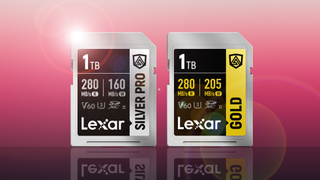

- Electronics
- Camera & Photo
- Digital Cameras
- Mirrorless Cameras
Add to your order

- No Additional Cost: You pay nothing for repairs – parts, labor, and shipping included.
- Coverage: Plan starts on the date of purchase. Drops, spills and cracked screens due to normal use are covered from day one. Malfunctions are covered after the manufacturer’s warranty. Real experts are available 24/7 to help with set-up, connectivity issues, troubleshooting and much more.
- Easy Claims Process: File a claim anytime online or by phone. Most claims approved within minutes. If we can’t repair it, we’ll send you an Amazon e-gift card for the purchase price of your covered product or replace it.
- Product Eligibility: Plan must be purchased with a product or within 30 days of the product purchase. Pre-existing conditions are not covered.
- Terms & Details: More information about this protection plan is available within the “Product guides and documents” section. Simply click “User Guide” for more info. Terms & Conditions will be available in Your Orders on Amazon. Asurion will also email your plan confirmation with Terms & Conditions to the address associated with your Amazon account within 24 hours of purchase.
Return this item for free
You can return this item for any reason: no shipping charges. The item must be returned in new and unused condition.
- Go to Your Orders to start the return
- Print the return shipping label
3 Year Camera Protection Plan
2 year camera protection plan, other sellers on amazon.

Image Unavailable

- To view this video download Flash Player
Nikon Z 50 DX-Format Mirrorless Camera Bundle with Nostrand Avenue Camera System Gadget Bag, Software Suite v3, 3-Piece 62mm UV/CPL/ND Filter Kit and 32GB SD Memory Card (5 Items)
Purchase options and add-ons, about this item.
- Bundle Includes: Nikon Z 50 DX-Format Mirrorless Camera with NIKKOR Z DX 16-50mm f/3.5-6.3 VR and NIKKOR Z DX 50-250mm f/4.5-6.3 VR Lenses, Nostrand Avenue Camera System Gadget Bag with Accessory and Cleaning Kit, Software Suite v3, 3-Piece 62mm UV/CPL/ND Filter Kit, and Extreme PRO 32GB SD Memory Card
- Creativity Comes Full Circle: Z 50 is designed around Nikon’s revolutionary Z mount, the widest lens mount of any comparable camera system. A wider mount means more light, and more light means more of everything good—sharpness, contrast, focusing speed, low light performance and image quality
- Depicts Story: 4K Ultra HD and time-lapse, 1080p slow-motion, filters, effects and much more. Edit videos on the fly: Shoot a clip, trim it right in the camera, send it to your phone and post it without missing a beat
- Life In Slow Motion: Turn an ordinary moment into an epic 120 fps slow motion 1080p Full HD video, great for bending time, speed ramping and more
- Chic ergonomic: Form and function in complete harmony. Comfortable viewing: Electronic Viewfinder is slightly extended for a more comfortable glare-free fit against your eye
Consider a similar item

Frequently bought together

Similar items that may deliver to you quickly

Compare with similar items
What's in the box, product description.
Tiny has never been a bigger deal. Meet the Z series mirrorless camera for the rest of us. Insanely small. Tough. Dead simple to use. Connected to your phone. Ready to transform you into a pro-caliber creator. The Nikon Z 50 DX-Format Mirrorless Camera comes with NIKKOR Z DX 16-50mm f/3.5-6.3 and NIKKOR Z DX 50-250mm f/4.5-6.3 VR lenses.
Creativity Comes Full Circle
Z 50 is designed around Nikon’s revolutionary Z mount, the widest lens mount of any comparable camera system. A wider mount means more light, and more light means more of everything good—sharpness, contrast, focusing speed, low light performance and image quality.
It’s Your Story. Tell It Beautifully.
4K Ultra HD and time-lapse, 1080p slow-motion, filters, effects and much more. Edit videos on the fly: Shoot a clip, trim it right in the camera, send it to your phone and post it without missing a beat.
Life in Slow Motion
Turn an ordinary moment into an epic 120 FPS slow motion 1080p Full HD video, great for bending time, speed ramping and more.
Little but Fierce
Slim, sleek, rugged design for every adventure. Z 50 delivers the award-winning performance of Z series in the smallest interchangeable lens DX-format camera ever.
Have Camera, Will Travel
Z 50’s strong, durable magnesium alloy construction makes it tough enough to take just about anywhere without fear.
Bundle Includes:
- Nikon Z 50 DX-Format Mirrorless Camera with NIKKOR Z DX 16-50mm f/3.5-6.3 VR and NIKKOR Z DX 50-250mm f/4.5-6.3 VR Lens
- Nostrand Avenue Camera System Gadget Bag with Accessory and Cleaning Kit
- Software Suite v3: Paint Shop Pro 2019, Video Studio SE, After Shot Pro 3, Painter Essentials 7
- 3-Piece 62mm UV/CPL/ND Filter Kit
- Extreme PRO 32GB SD Memory Card
Looking for specific info?
Videos for this product.

Click to play video

Nikon Z50 - Watch Before You Buy
Tech Through The Lens
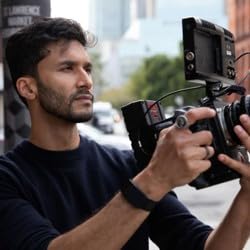
Product information
Warranty & support, customer reviews.
Customer Reviews, including Product Star Ratings help customers to learn more about the product and decide whether it is the right product for them.
To calculate the overall star rating and percentage breakdown by star, we don’t use a simple average. Instead, our system considers things like how recent a review is and if the reviewer bought the item on Amazon. It also analyzed reviews to verify trustworthiness.
Customers say
Customers like the weight, quality and image quality of the digital camera. For example, they mention it's light weight, perfect for trips, and the size and heft are pleasant in the hand.
AI-generated from the text of customer reviews
Customers like the weight of the digital camera. They say it's light weight and perfect for trips.
"It’s light weight and perfect for trips." Read more
"...The control layout is familiar and very handy. The size and heft are pleasant in the hand ." Read more
"...In fact the only good thing was it weighed a lot less ..." Read more
"After looking at a lot of cameras I was impressed with how light it was . The picture quality is fantastic and it is an amazing piece of electronics...." Read more
Customers are satisfied with the quality of the digital camera. They mention that it is an amazing piece of electronics.
" Products were adequate but camera bag way to small for a camera and the two lenses that came with the bundle" Read more
"...The picture quality is fantastic and it is an amazing piece of electronics ...." Read more
" Awesome camera ..." Read more
" Great camera ..." Read more
Customers like the image quality of the digital camera. They mention that the image is very good through both lenses.
"...over 400 images through the Z50 now, I’ll say that the image quality is very good through both lenses. The control layout is familiar and very handy...." Read more
"...The picture quality is fantastic and it is an amazing piece of electronics...." Read more
" Beautiful camera !..." Read more
- Sort reviews by Top reviews Most recent Top reviews
Top reviews from the United States
There was a problem filtering reviews right now. please try again later..
- Amazon Newsletter
- About Amazon
- Accessibility
- Sustainability
- Press Center
- Investor Relations
- Amazon Devices
- Amazon Science
- Sell on Amazon
- Sell apps on Amazon
- Supply to Amazon
- Protect & Build Your Brand
- Become an Affiliate
- Become a Delivery Driver
- Start a Package Delivery Business
- Advertise Your Products
- Self-Publish with Us
- Become an Amazon Hub Partner
- › See More Ways to Make Money
- Amazon Visa
- Amazon Store Card
- Amazon Secured Card
- Amazon Business Card
- Shop with Points
- Credit Card Marketplace
- Reload Your Balance
- Amazon Currency Converter
- Your Account
- Your Orders
- Shipping Rates & Policies
- Amazon Prime
- Returns & Replacements
- Manage Your Content and Devices
- Recalls and Product Safety Alerts
- Conditions of Use
- Privacy Notice
- Consumer Health Data Privacy Disclosure
- Your Ads Privacy Choices

- Bahasa Indonesia
- Eastern Europe
- Moscow Oblast
Elektrostal
Elektrostal Localisation : Country Russia , Oblast Moscow Oblast . Available Information : Geographical coordinates , Population, Area, Altitude, Weather and Hotel . Nearby cities and villages : Noginsk , Pavlovsky Posad and Staraya Kupavna .
Information
Find all the information of Elektrostal or click on the section of your choice in the left menu.
- Update data
Elektrostal Demography
Information on the people and the population of Elektrostal.
Elektrostal Geography
Geographic Information regarding City of Elektrostal .
Elektrostal Distance
Distance (in kilometers) between Elektrostal and the biggest cities of Russia.
Elektrostal Map
Locate simply the city of Elektrostal through the card, map and satellite image of the city.
Elektrostal Nearby cities and villages
Elektrostal weather.
Weather forecast for the next coming days and current time of Elektrostal.
Elektrostal Sunrise and sunset
Find below the times of sunrise and sunset calculated 7 days to Elektrostal.
Elektrostal Hotel
Our team has selected for you a list of hotel in Elektrostal classified by value for money. Book your hotel room at the best price.
Elektrostal Nearby
Below is a list of activities and point of interest in Elektrostal and its surroundings.
Elektrostal Page

- Information /Russian-Federation--Moscow-Oblast--Elektrostal#info
- Demography /Russian-Federation--Moscow-Oblast--Elektrostal#demo
- Geography /Russian-Federation--Moscow-Oblast--Elektrostal#geo
- Distance /Russian-Federation--Moscow-Oblast--Elektrostal#dist1
- Map /Russian-Federation--Moscow-Oblast--Elektrostal#map
- Nearby cities and villages /Russian-Federation--Moscow-Oblast--Elektrostal#dist2
- Weather /Russian-Federation--Moscow-Oblast--Elektrostal#weather
- Sunrise and sunset /Russian-Federation--Moscow-Oblast--Elektrostal#sun
- Hotel /Russian-Federation--Moscow-Oblast--Elektrostal#hotel
- Nearby /Russian-Federation--Moscow-Oblast--Elektrostal#around
- Page /Russian-Federation--Moscow-Oblast--Elektrostal#page
- Terms of Use
- Copyright © 2024 DB-City - All rights reserved
- Change Ad Consent Do not sell my data
Sovremennik" cinema square, Elektrostal Live Cam
Sovremennik" cinema square, elektrostal.
Live webcam shows the square in front of the cinema «Sovremennik» in real time. The camera is installed on the house number 18 on Mir Street in the city of Elektrostal, Moscow Region, Russia. The live camera is aimed at the monument to I.F. Tevosyan, which is located on the square of the Sovremennik cinema. The intersection of Tevosyan Street and Mir Street is in the field of view of the web camera. Therefore, this live camera can help assess the workload of this section of the road and the presence of congestion at the intersection. The main entrance of the school №13 and the pedestrian crossing in front of it also on the broadcating.
Other Languages
Webcam on the map and the nearest, nearest webcams.

Similar webcams


IMAGES
VIDEO
COMMENTS
The Z50 is a mirrorless camera, meaning it's compact in size and more lightweight than most DSLR brothers. For a travel camera particularly, the small size and weight is definitely something you will appreciate, having to carry it with you on tours and hikes. However much I love my Nikon D3 DSLR, after a while, it feels like I'm carrying a ...
The Nikon Z50 is an excellent debut for the company in the crowded APS-C mirrorless market. It's an ideal travel camera, and it's also a great option for those looking to move from a Nikon ...
Shot with Nikon Z50 with Nikkor Z DX 16-50mm f/3.5-6.3 VR 1/160sec at f/6.3, ISO8000 (Image credit: Chris George/Digital Camera World) Despite the fact that we were shooting in JPEG on an incredibly grey and overcast day, we were able to get plenty of detail out of the Nikon Z50's files without compromising image quality.
Nikon Z 50 Camera Review. Nikon Z 50. The Nikon Z 50 is the first APS-C camera in Nikon's mirrorless Z series. It sits below full-frame models like the Nikon Z 5 and Nikon Z 6II and above the smaller, vlogging-oriented Nikon Z 30. While this isn't the most portable APS-C camera, it's well-built and feels great in the hand.
Customize your Z 50 to match your one-of-a-kind style with one of four newly designed camera bags. Shop Travel Kits. See more from Z. Videos and Downloads. Video. Z 50 Video: Shot by Shawn Corrigan. Video. Nikon Z 50 Travel Movie by Alex Stead. Link. Z 50 Brochure. Video. Nikon Z 50 Behind the Scenes with Alex Stead. Video. Nikon Z 50 Behind ...
The Z 50 matches the looks of its full-frame siblings, with a prominent EVF hump on the top and Nikon's iconic red stripe on the handgrip. But, despite sharing the same wide-diameter lens mount ...
Nikon Z50 review. The Nikon Z50 is a 20.9MP mirrorless camera: the first time the company has put an (unstabilized) APS-C sensor behind its new, larger 'Z' lens mount. The company says the camera is designed to attract a generation of users who don't consider themselves to be photographers. Alongside the camera, Nikon has announced two lenses ...
Professional looking stills, 4K Ultra HD videos, slow motion, time-lapse and more. Wi-Fi® and Bluetooth enabled, plus in-camera video editing. Beautifully designed with a comfortable grip, flip-down touchscreen LCD, smart button layout, extended Electronic Viewfinder and travel-proof ruggedness. What's Included for Z 50; Full details
Reasons to love the Nikon Z50 mirrorless camera for travel and beyond. Options for composing are the 3.2 inch rear display, which rotates 180 degrees for selfies, or an electronic viewfinder. I like the option of screen vs. viewfinder, and found the electronic viewfinder to be a delight. It's actually an additional electronic display screen ...
Stunningly sharp pictures and videos - using the potential of the large-diameter Z-mount system. Image sensor featuring 20.9 effective megapixels and class-leading high ISO of 51200 produces clean, noise-free images in low light. 209 focus points offer wide AF coverage in the frame - approx. 87% horizontal and 85% vertical.
Along with the Z50 camera body, Nikon also released two DX Z lenses to use with it. The Nikkor Z DX 16-50mm f/3.5-6.3 VR kit lens is super compact and basically a pancake lens. It's a great size to keep your camera kit very small. Meanwhile, the Nikkor Z DX 50-250mm f/4.5-6.3 VR is a telephoto lens with a great zoom range.
This is a travel-zoom optic with a focal length of 18-140mm. That's equivalent to a 27-210mm lens on a full-frame camera. ... Thankfully, SmallRig has a solution in the form of the Vlogging Mounting Plate for Nikon Z50 Camera LCN2525, which retails for $28.90 by itself and is included in Nikon's Z50 Vlogger Kit. More on this later.
The Nikon Z50 does not have in-body stabilization, so relies on VR lenses like the Nikkor Z DX 50-250mm f/4.5-6.3 for stabilization. The Nikon Z5 does have in-body stabilization. (Image credit: Nikkor Z) • Nikon Z5: 5-axis to 5EV • Nikon Z50: Lens-based. Like Nikon's other full-frame mirrorless cameras, the Z5 has in-body stabilization ...
The Z50 is a lot like a mirrorless D5600. Which is no bad thing but probably won't attract a new audience. To a great extent, the Nikon Z50 looks like a very good camera. The very good camera in question being the D5600. The mirror has gone, but not a lot else seems to have been changed: most of the specifications and much of the experience has ...
First DX-format mirrorless camera to use a large 55mm lens mount, offering advantages in high image quality and lowlight performance. 20.9 MP sensor with robust 4K UHD video features. Built-in Wi-Fi and Bluetooth for simple pairing to a smartphone. "Selfie" flip down touch LCD screen, great for self-portraits and vlogging.
The difference in weight and size are marginal, and you get the benefits of a full frame camera. Either is great. I have both cameras and usually find myself reaching for my Z5 for general walk around or travel photography. The Z50 is great when I want a faster frame rate or the extra reach from the crop sensor.
The f/2 maximum aperture makes it the fastest lens in our round-up, and also the best choice for any Z50 users who like background blur, either in stills or video. Optically, it brings very decent sharpness and pleasing bokeh. The autofocus system is both fast and quiet. Read more:Nikon Z 40mm f/2 review.
Connected to your phone. Ready to transform you into a pro-caliber creator. The Nikon Z 50 DX-Format Mirrorless Camera comes with NIKKOR Z DX 16-50mm f/3.5-6.3 and NIKKOR Z DX 50-250mm f/4.5-6.3 VR lenses. Creativity Comes Full Circle. Z 50 is designed around Nikon's revolutionary Z mount, the widest lens mount of any comparable camera system.
2. Minor update to the Z50, much like the Z30. Changes from "C" Firmware Version 2.50 to 2.51. • Changed the default values for the following settings displayed when connecting wirelessly: - Encryption keys. - The password displayed after the camera's default settings are restored.
Find company research, competitor information, contact details & financial data for SOYUZ, OOO of Elektrostal, Moscow region. Get the latest business insights from Dun & Bradstreet.
Expert news, reviews and videos of the latest digital cameras, lenses, accessories, and phones. Get answers to your questions in our photography forums. ... All forums Nikon 1 System Talk Change forum. Moscow Metro Started 9 months ago | Photos Forum: Threaded view: holgerlinke ...
Elektrostal Geography. Geographic Information regarding City of Elektrostal. Elektrostal Geographical coordinates. Latitude: 55.8, Longitude: 38.45. 55° 48′ 0″ North, 38° 27′ 0″ East. Elektrostal Area. 4,951 hectares. 49.51 km² (19.12 sq mi) Elektrostal Altitude.
The camera is installed on the house number 18 on Mir Street in the city of Elektrostal, Moscow Region, Russia. The live camera is aimed at the monument to I.F. Tevosyan, which is located on the square of the Sovremennik cinema. The intersection of Tevosyan Street and Mir Street is in the field of view of the web camera.